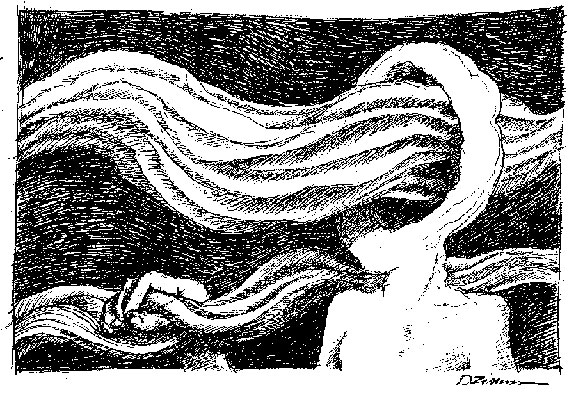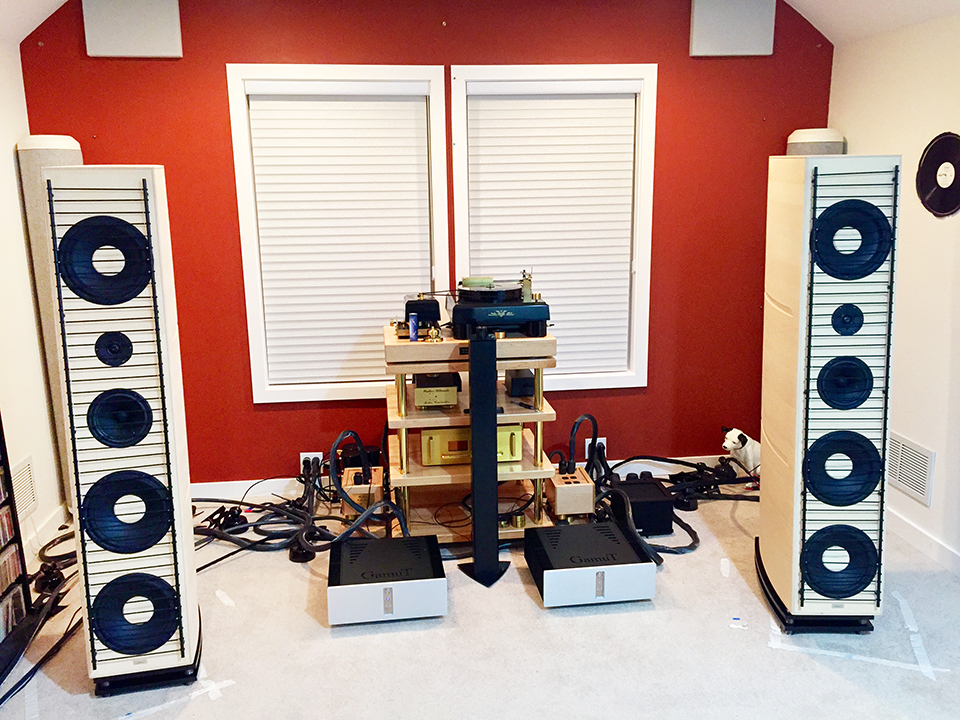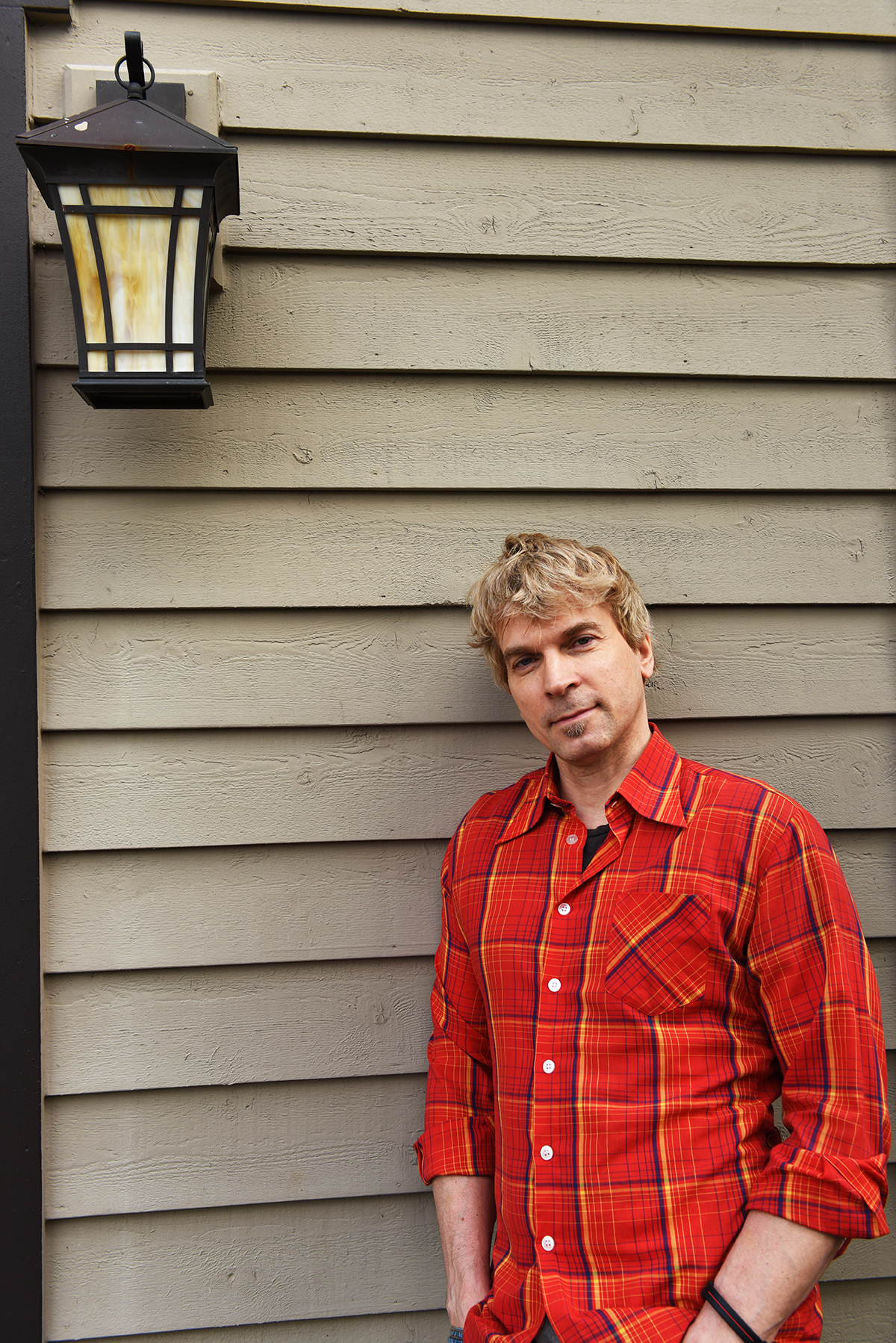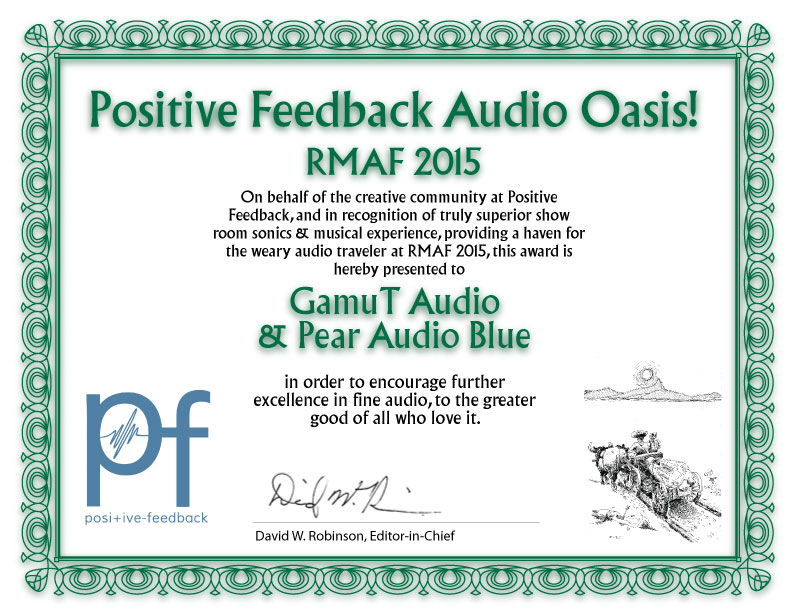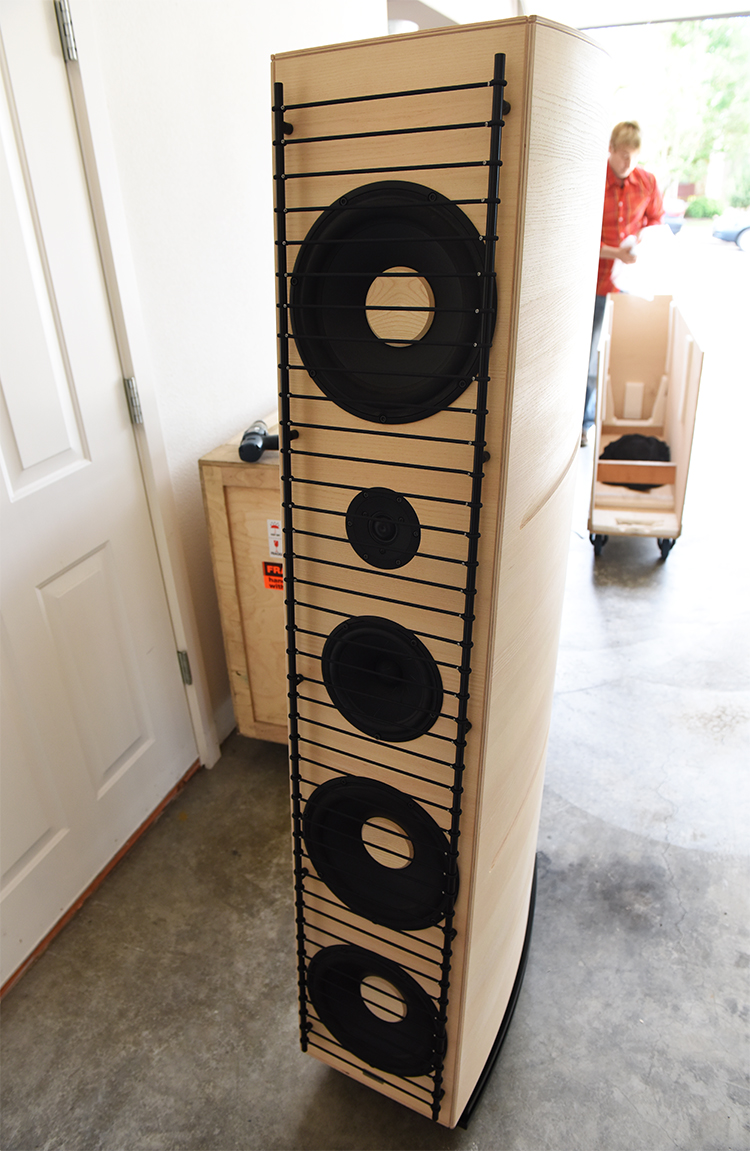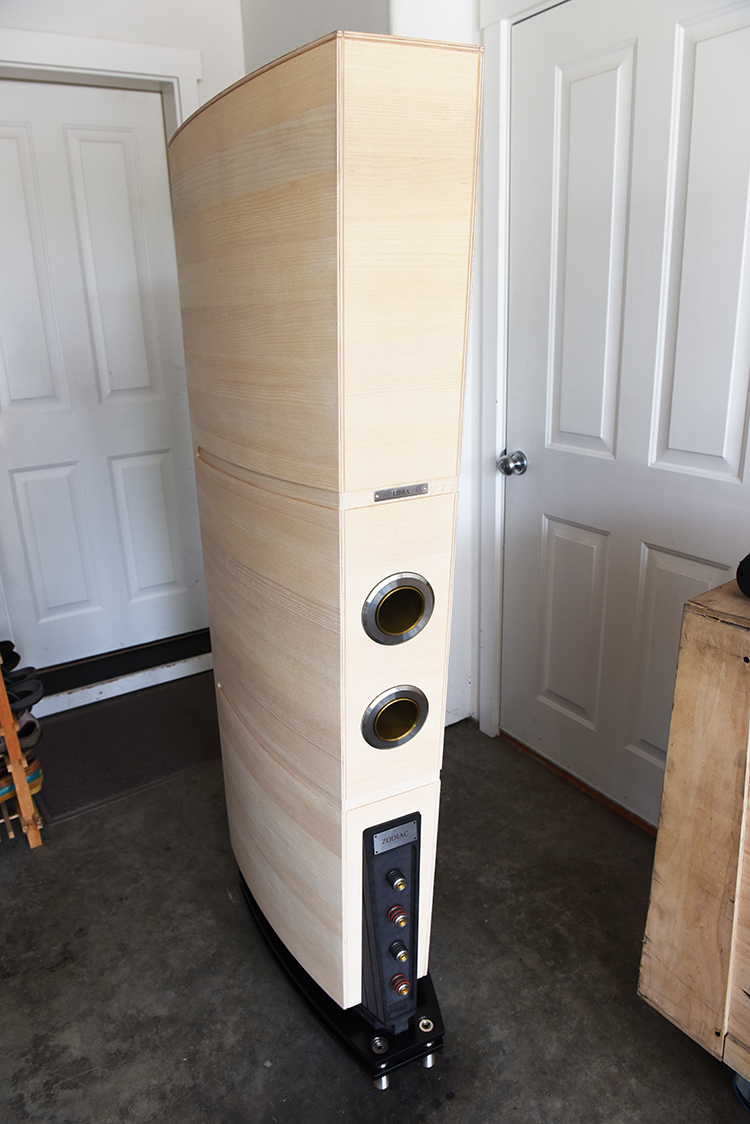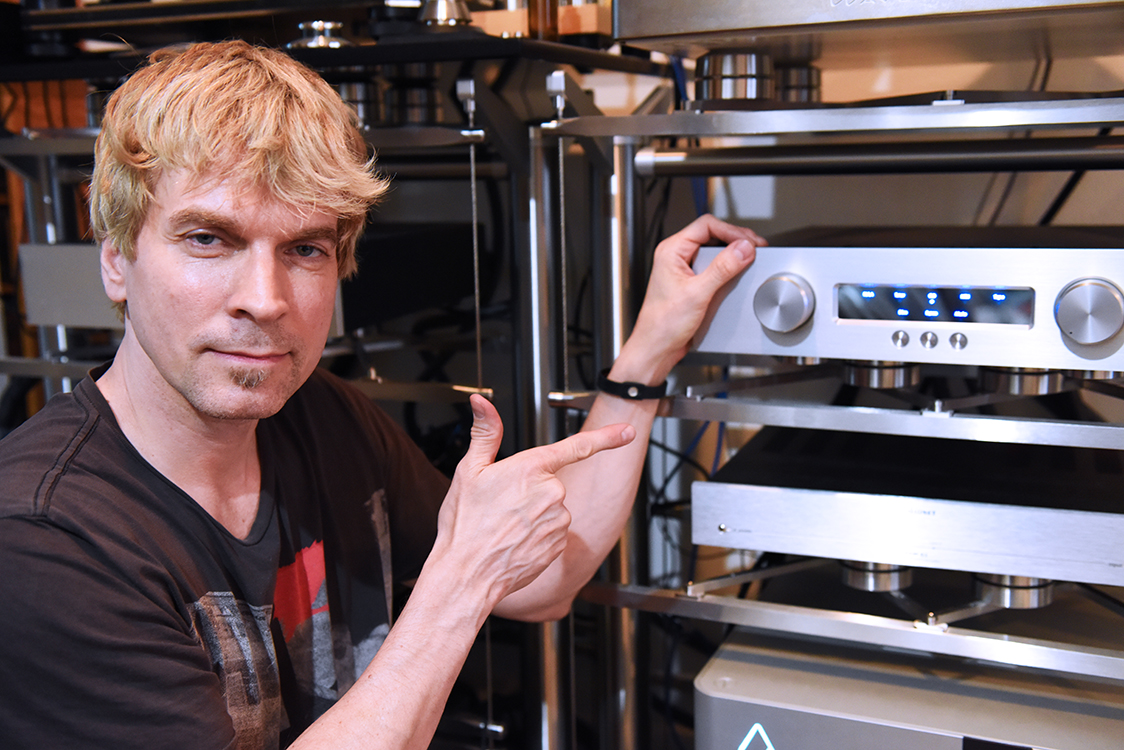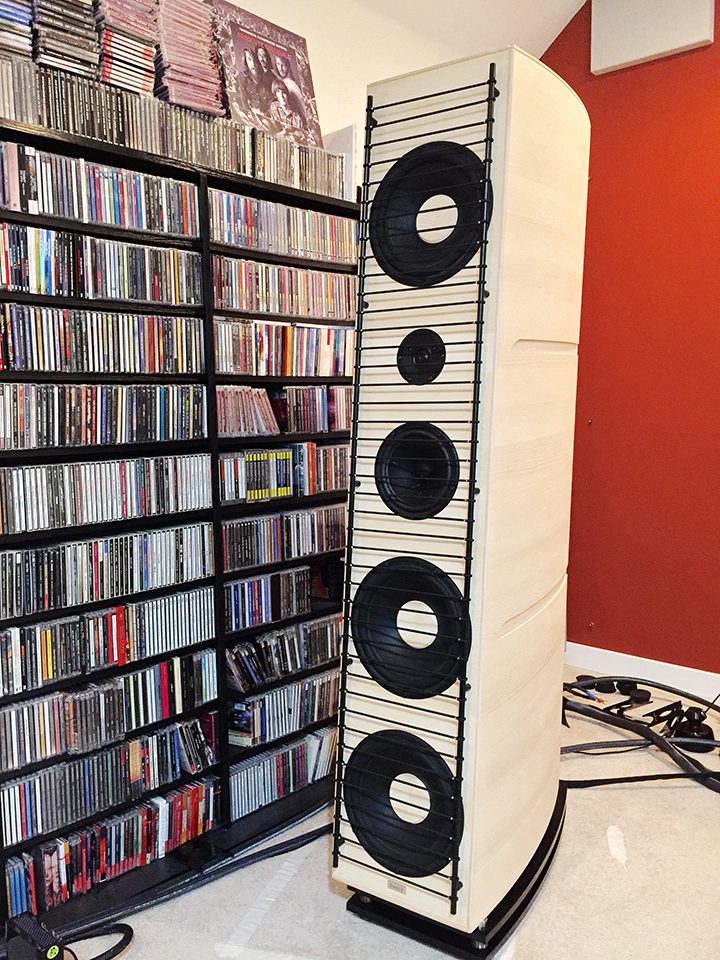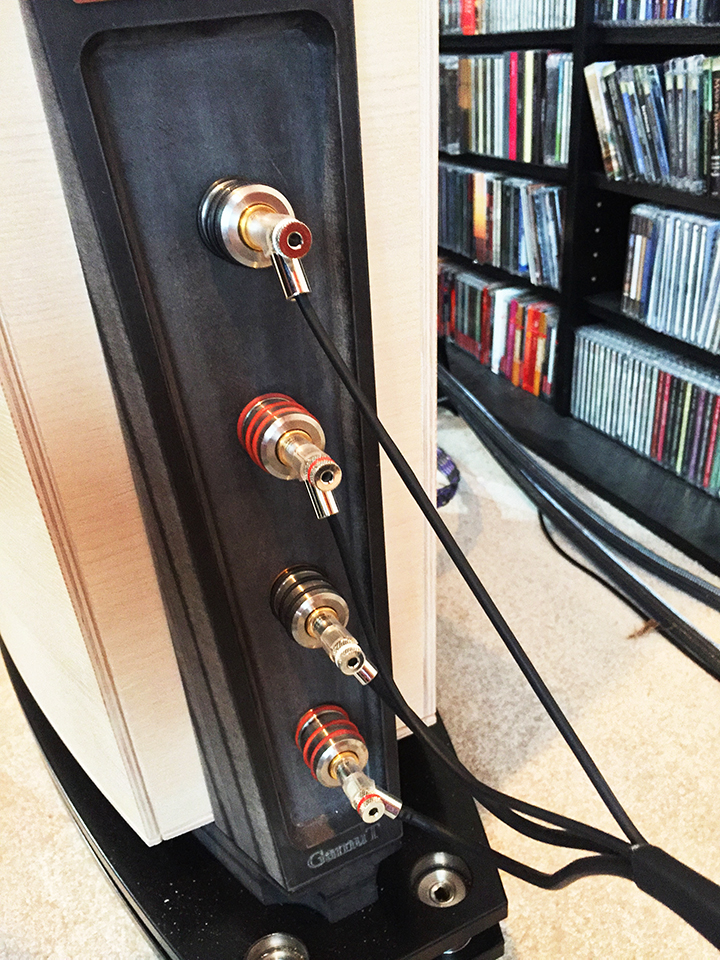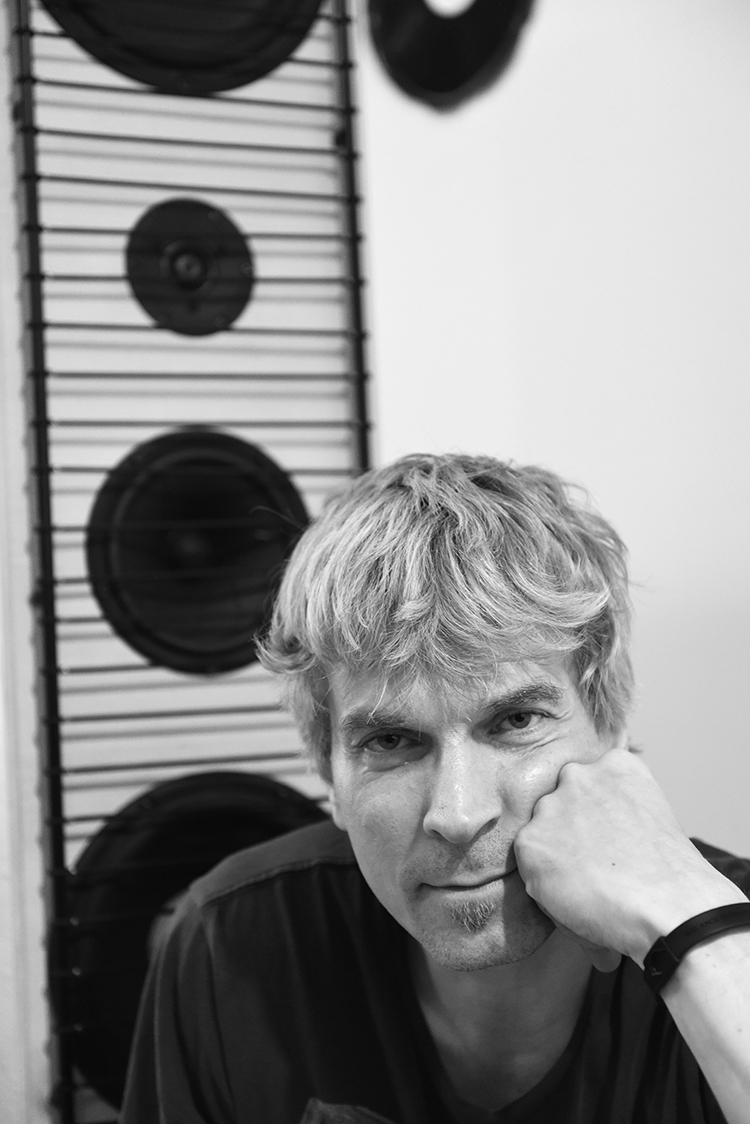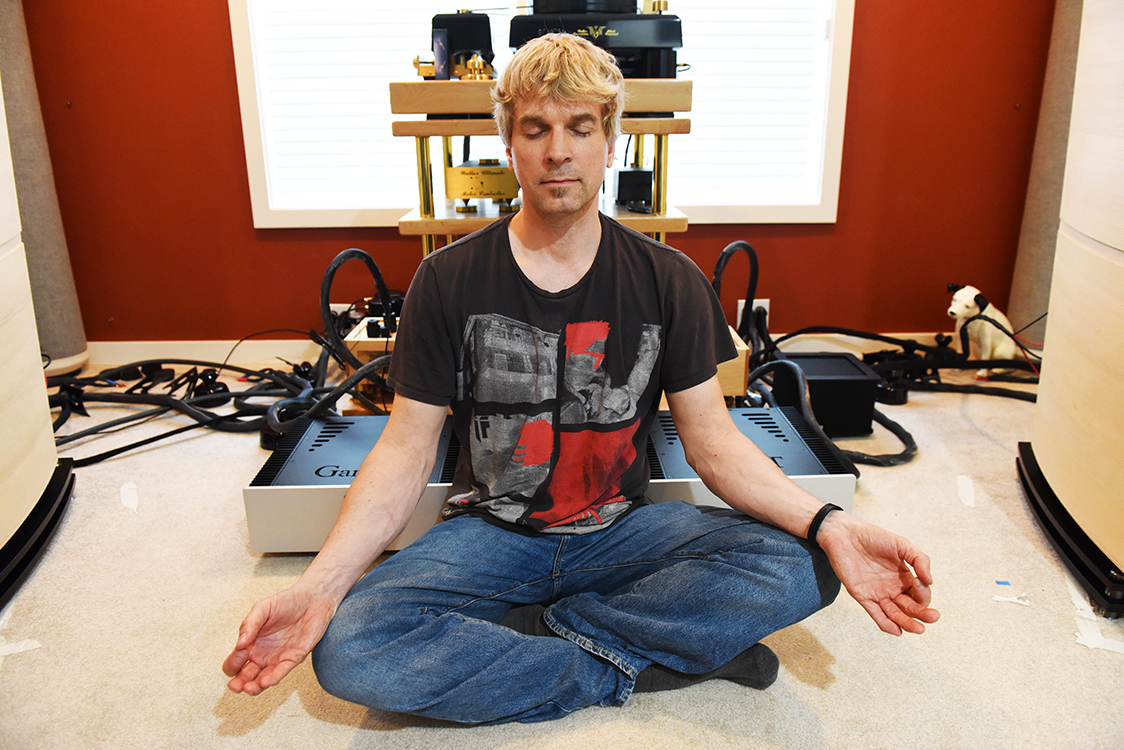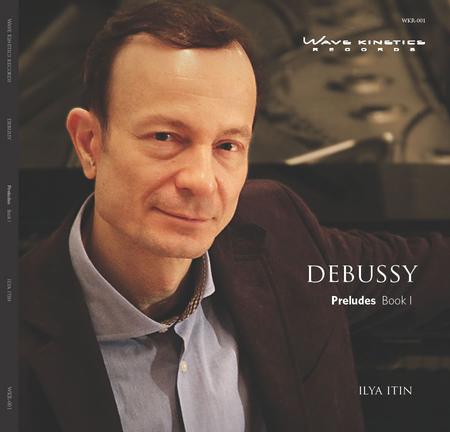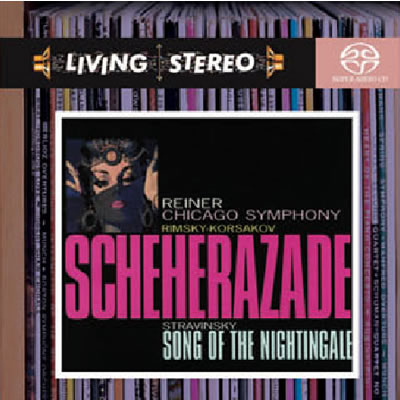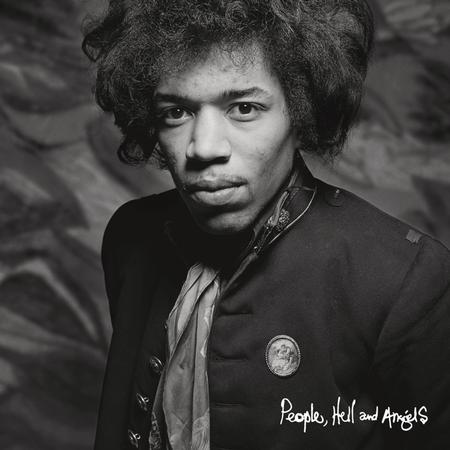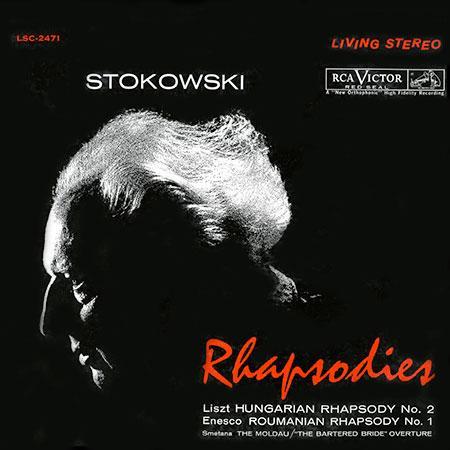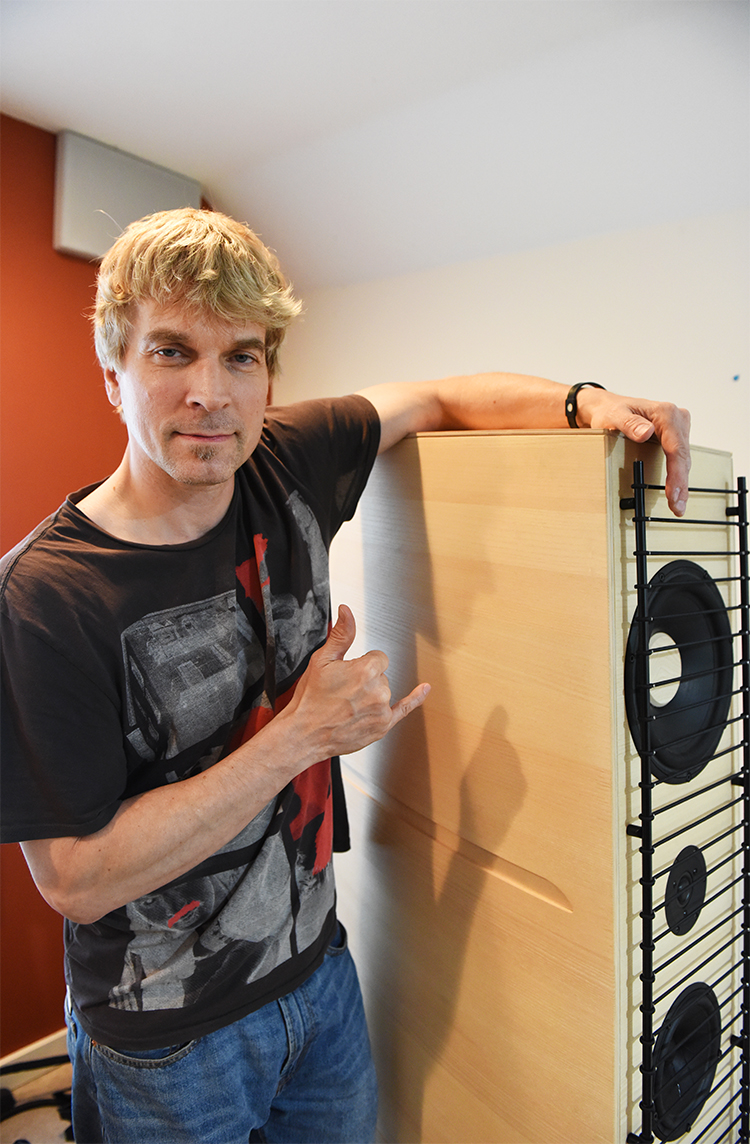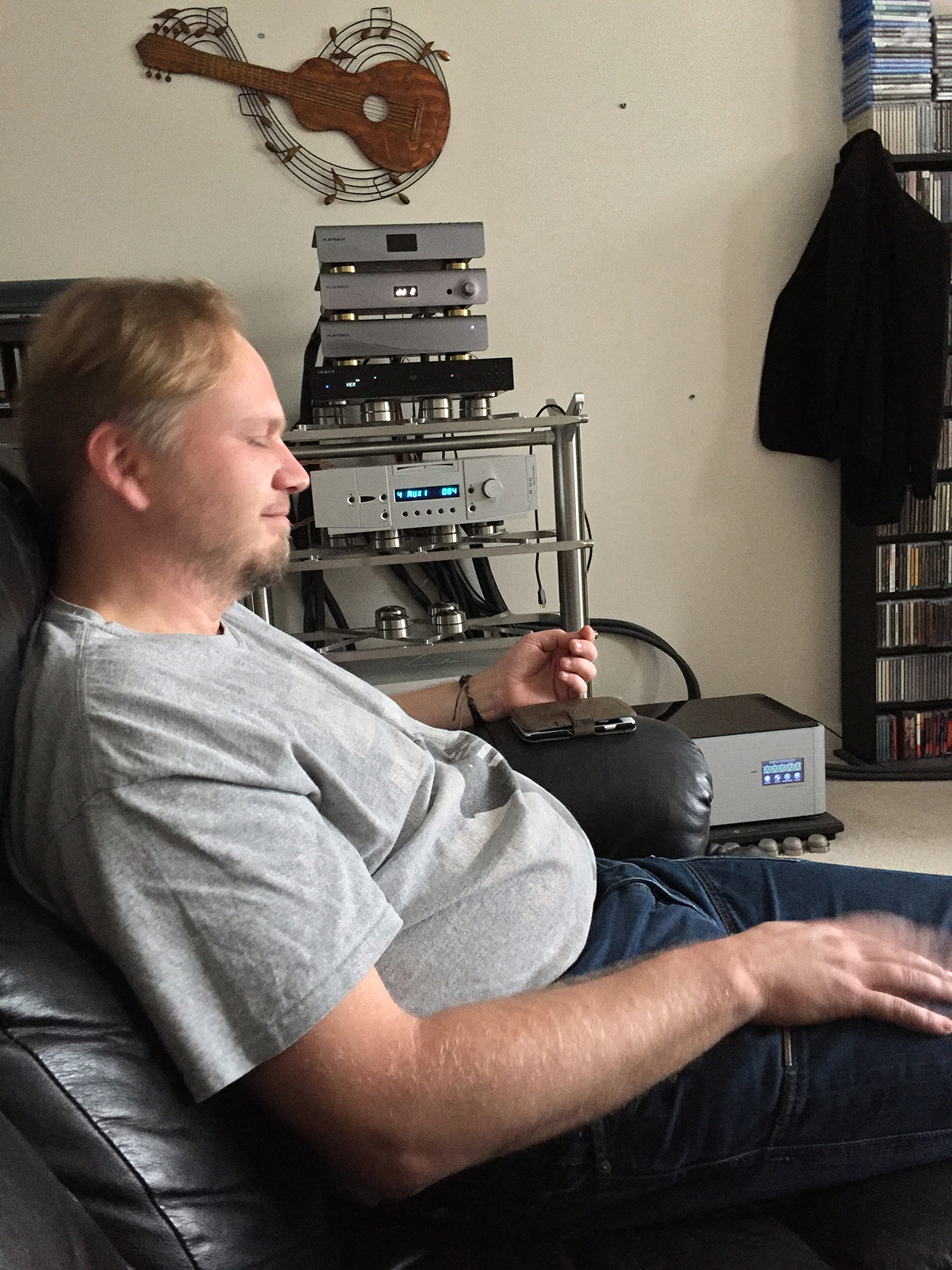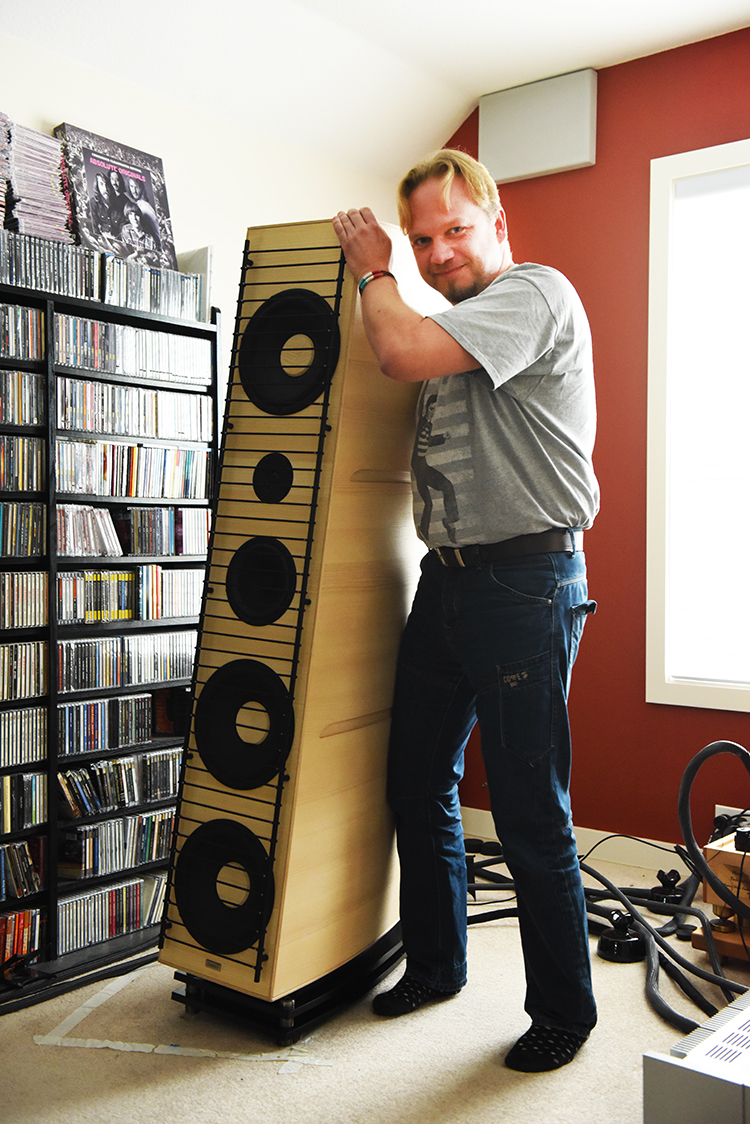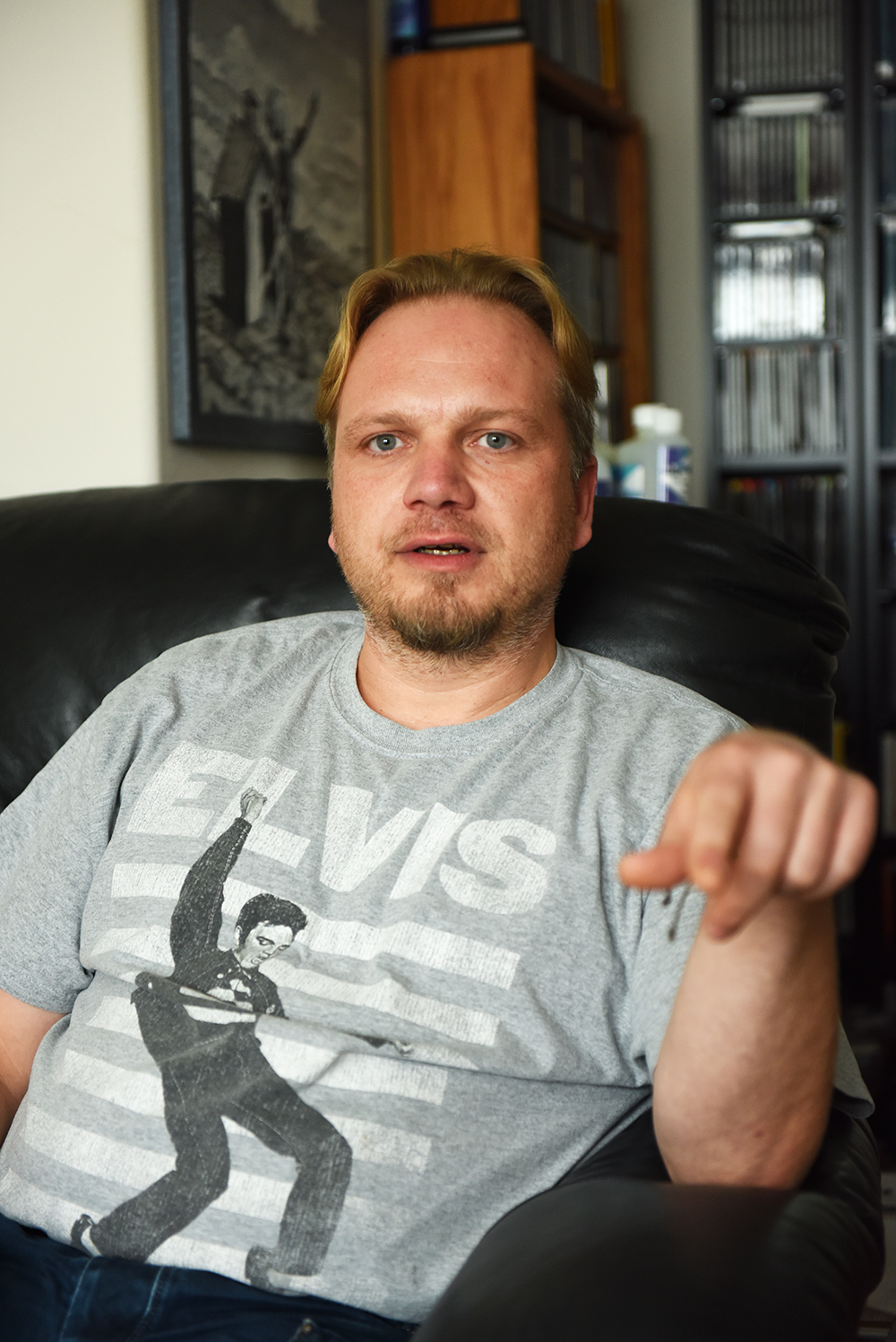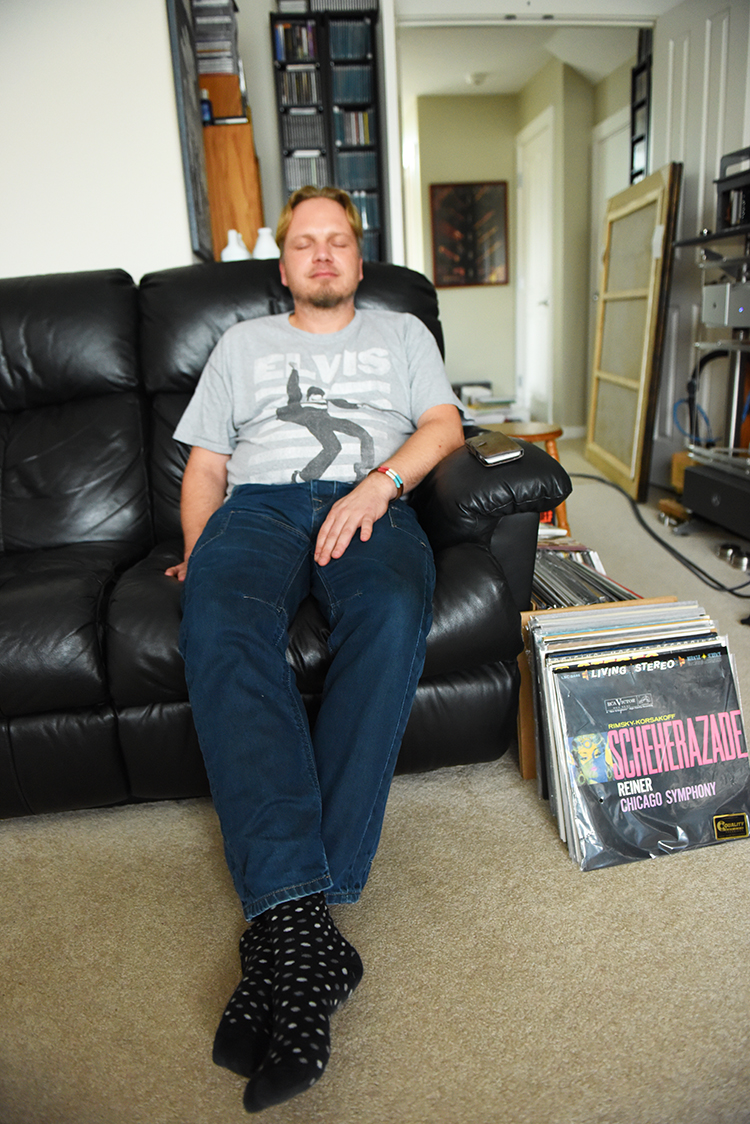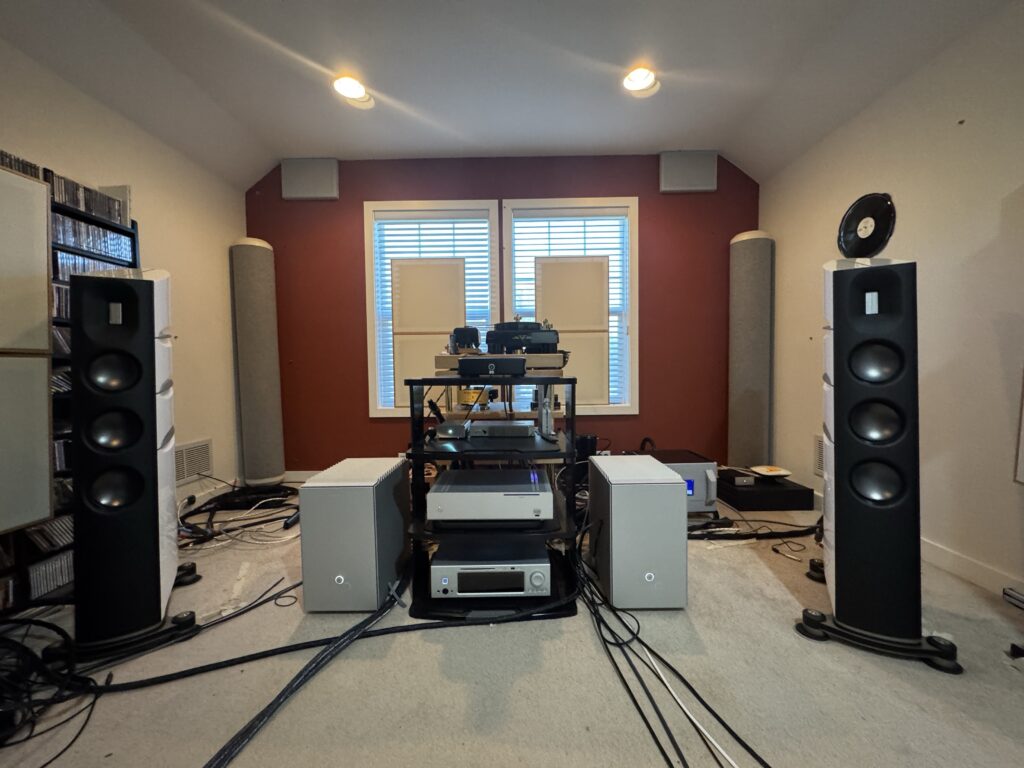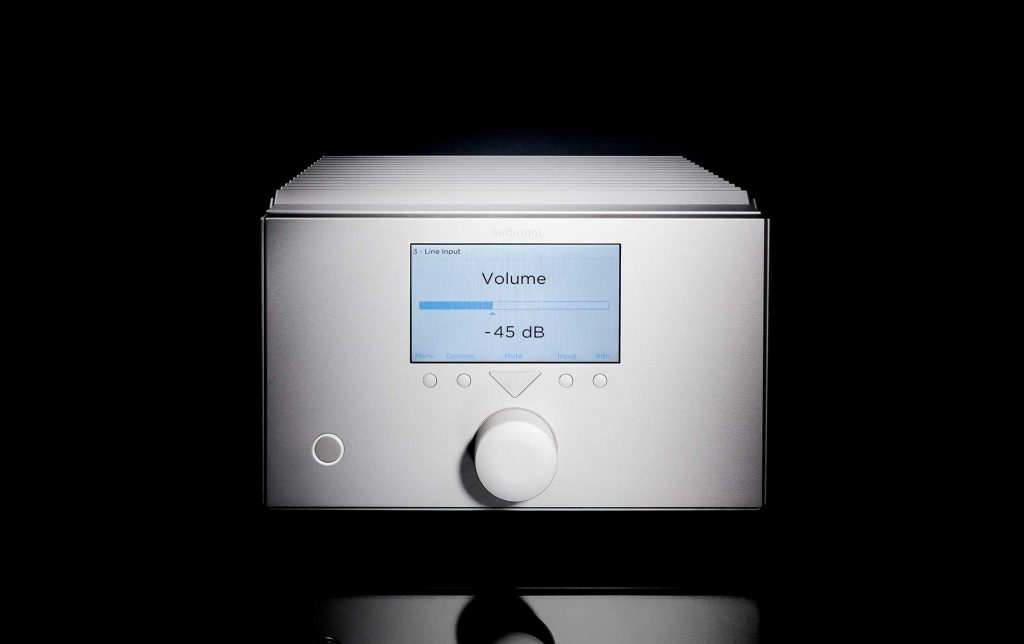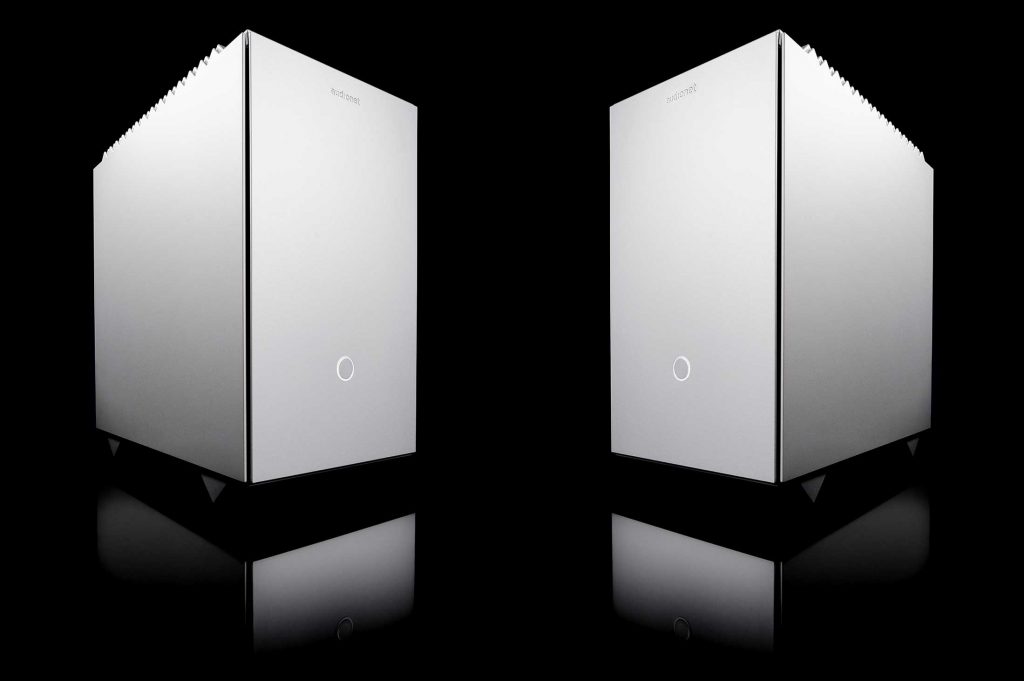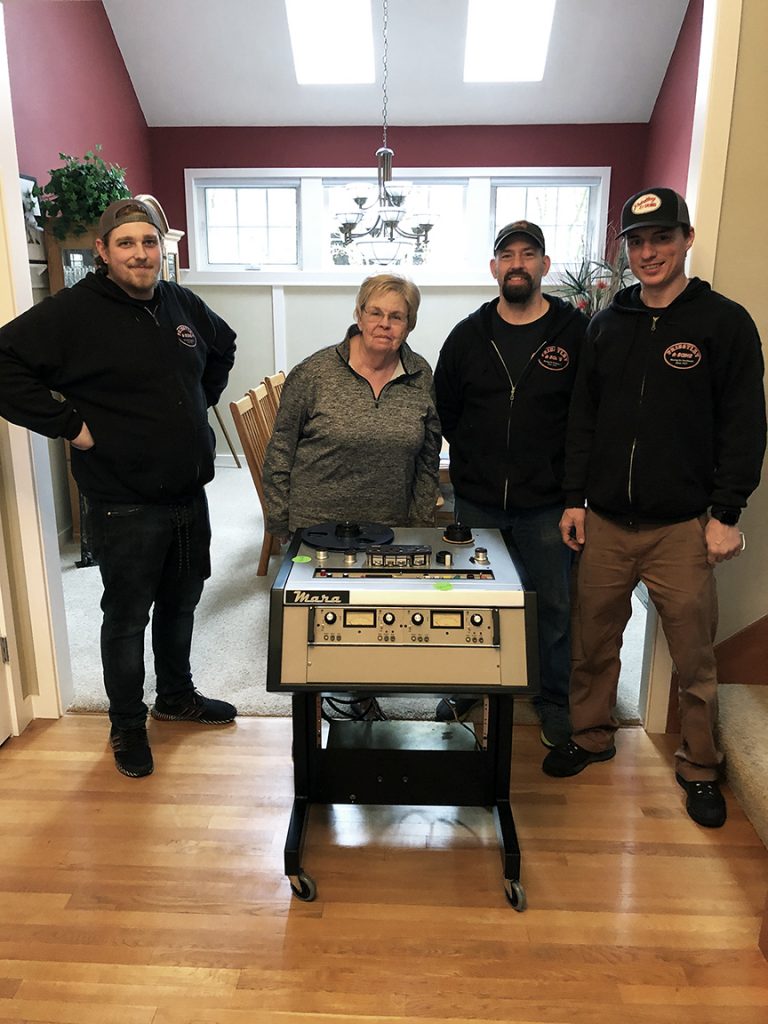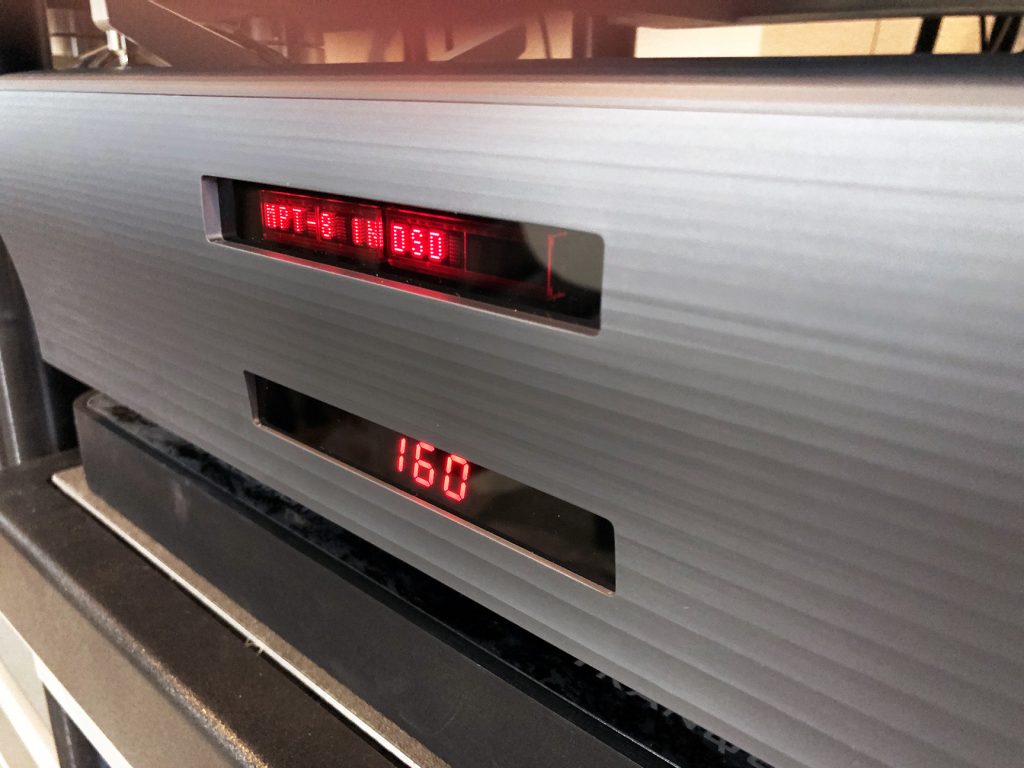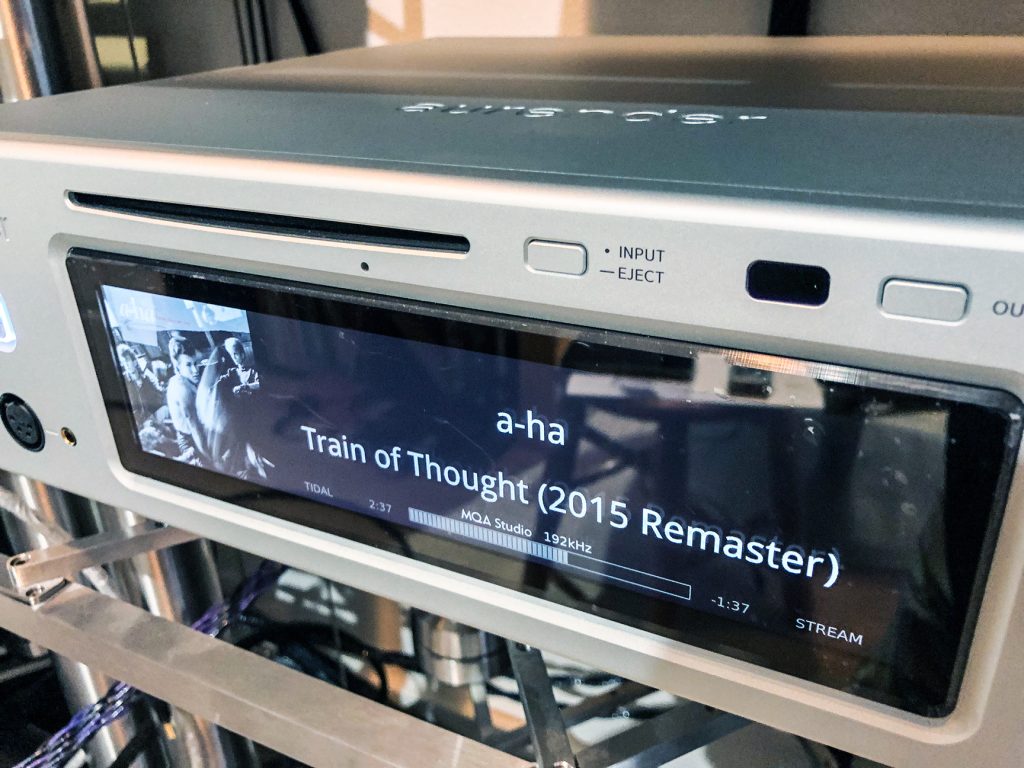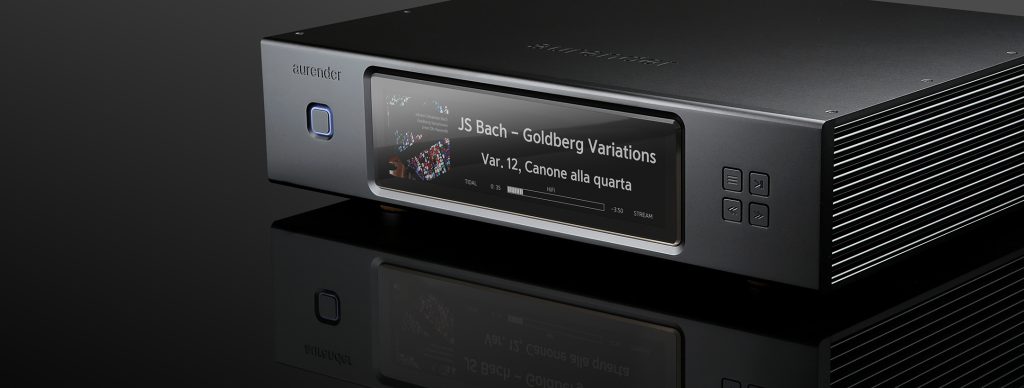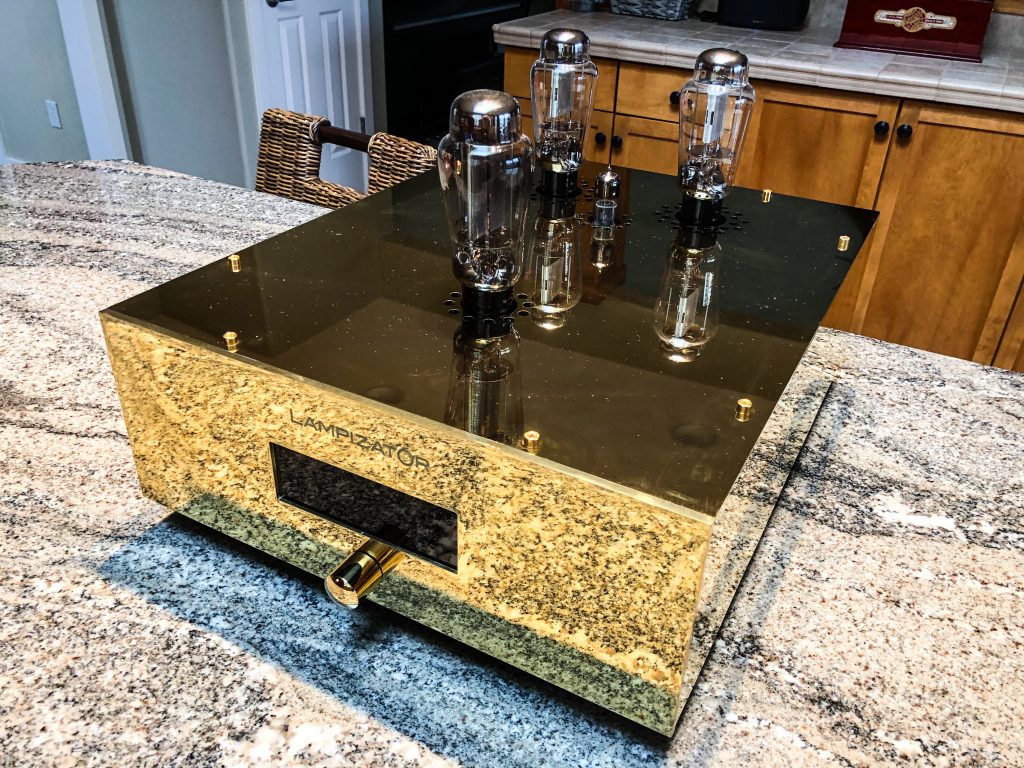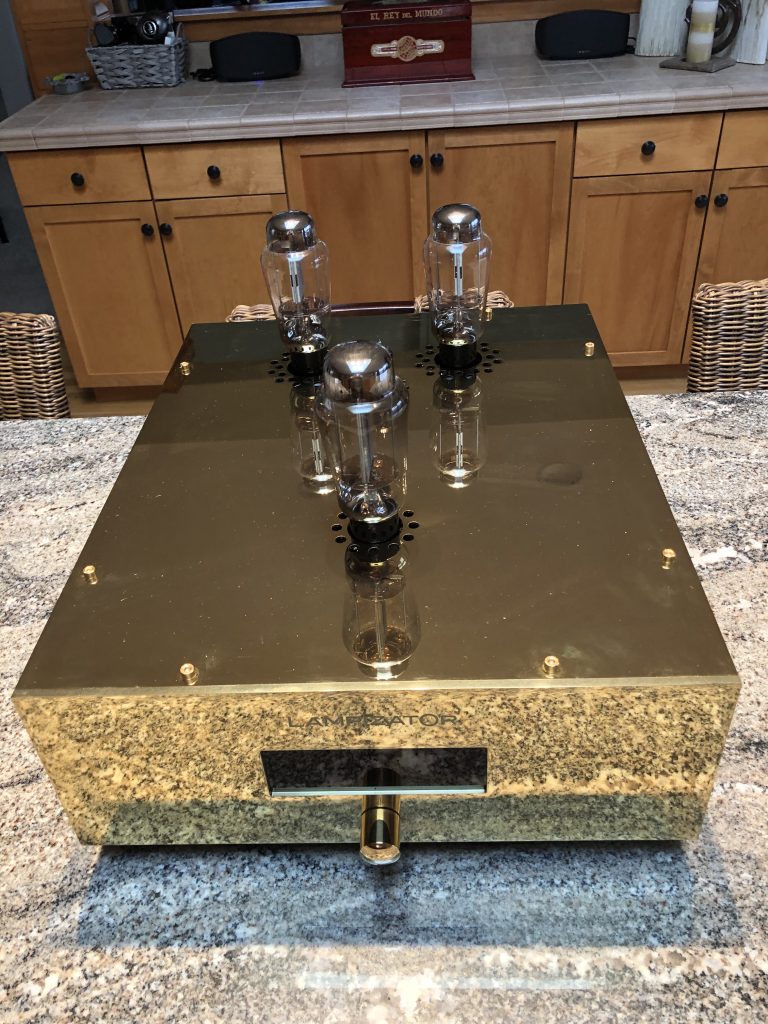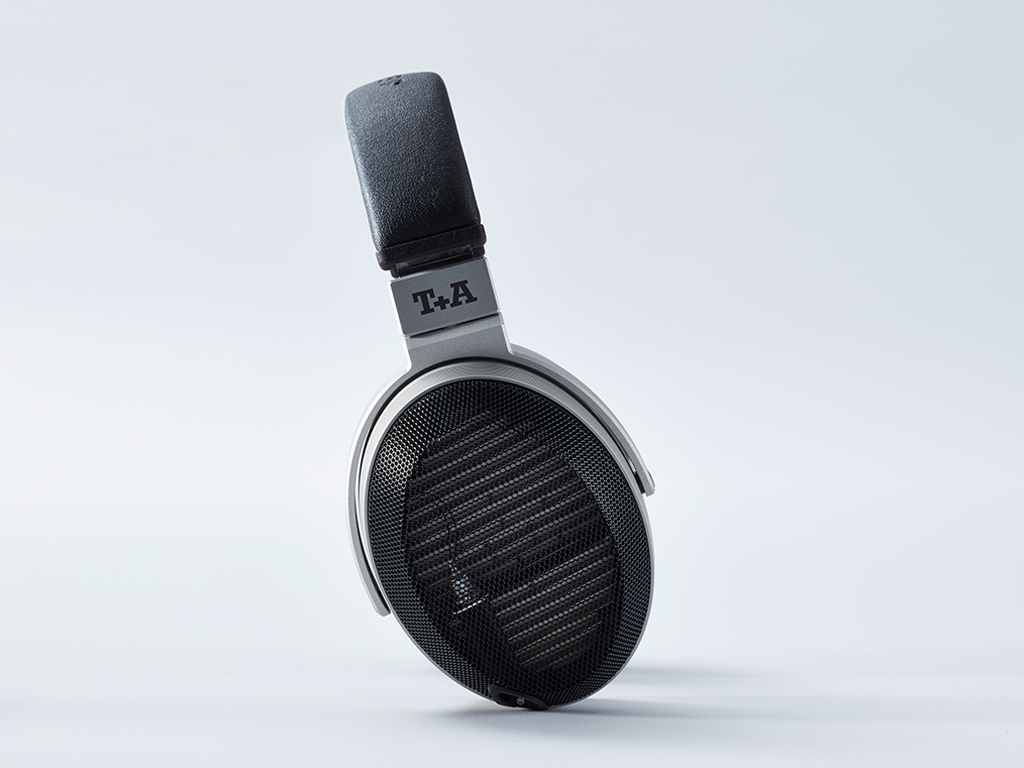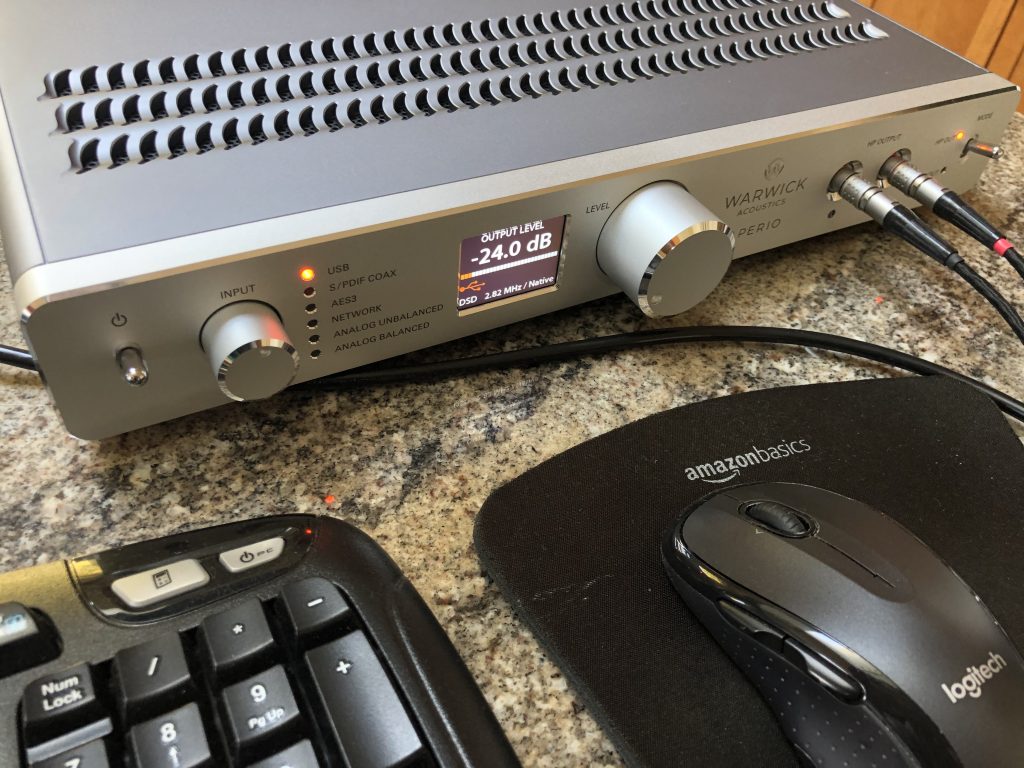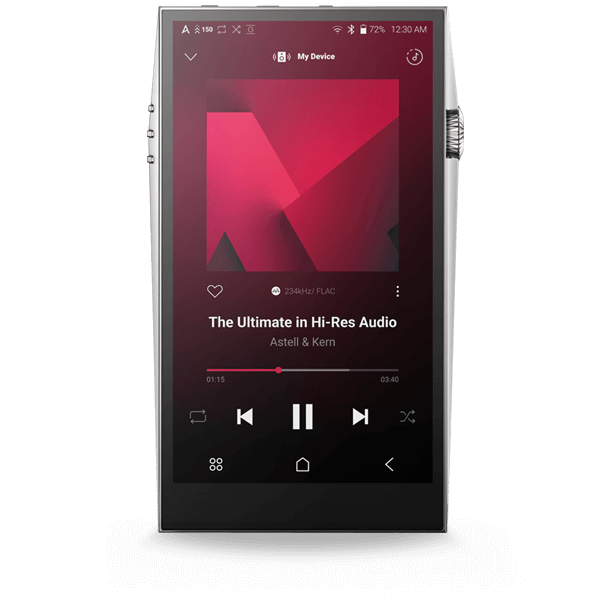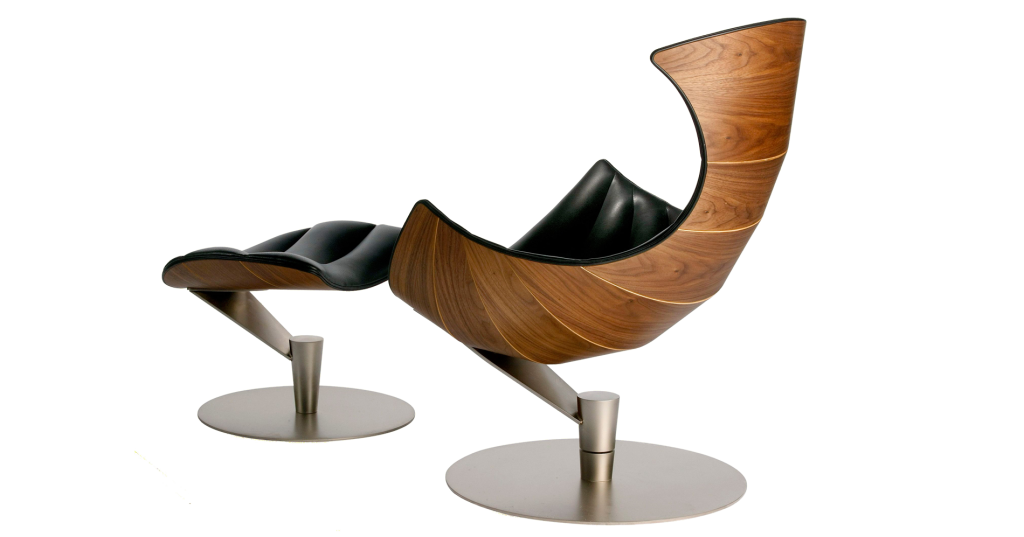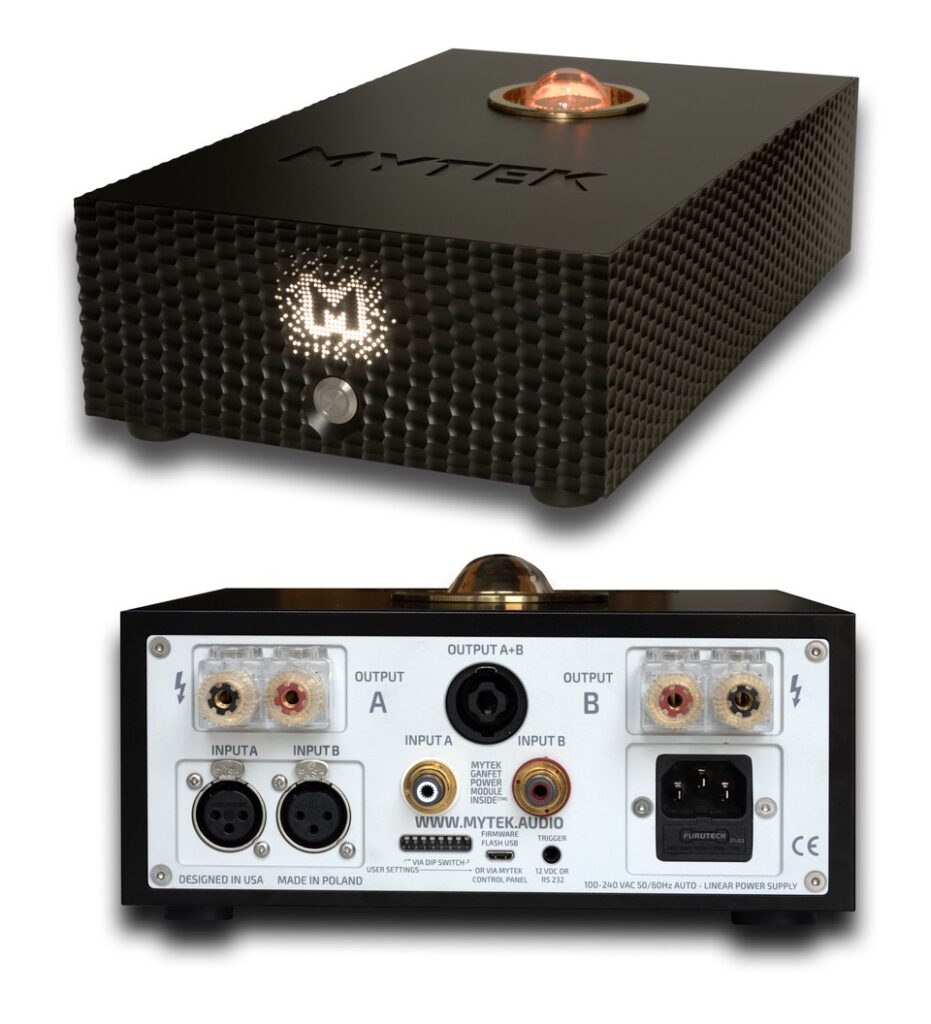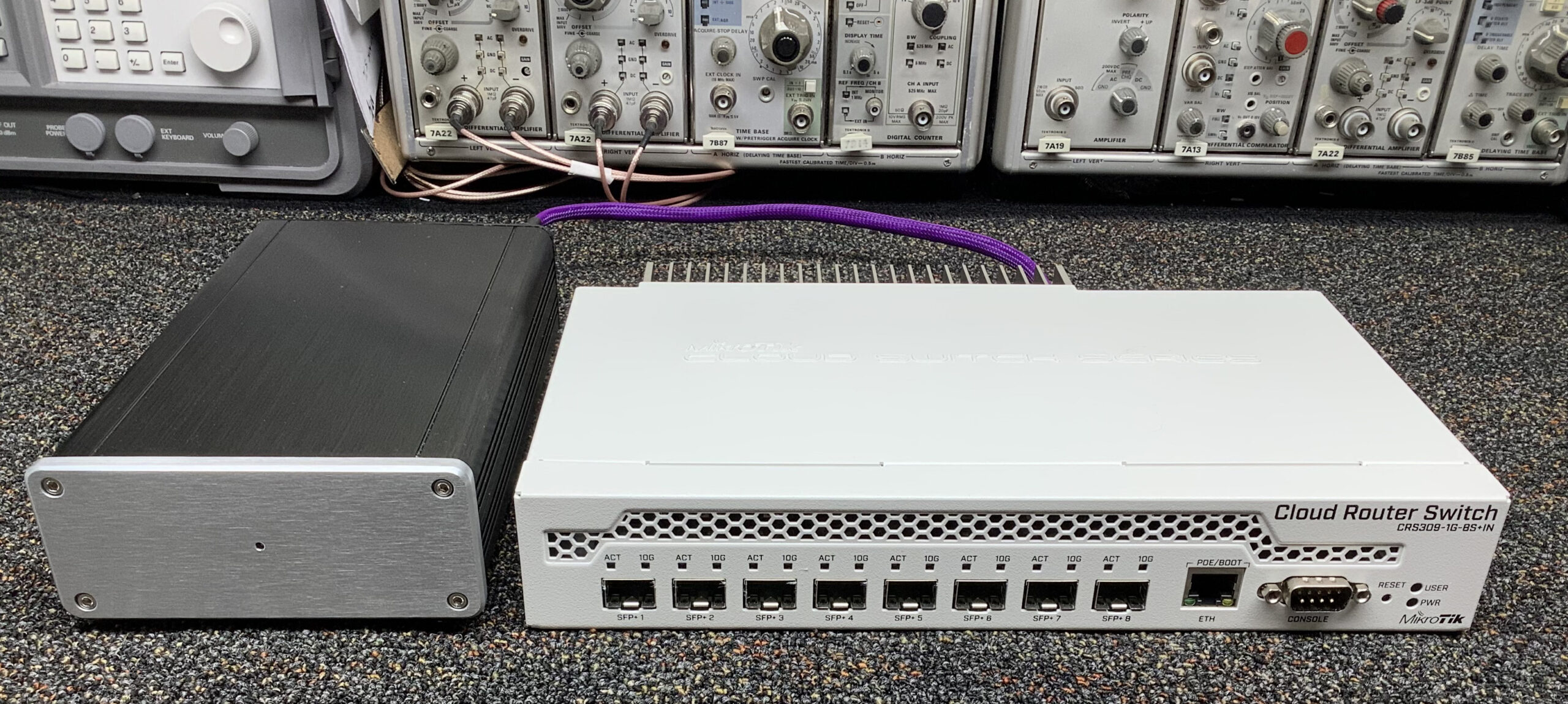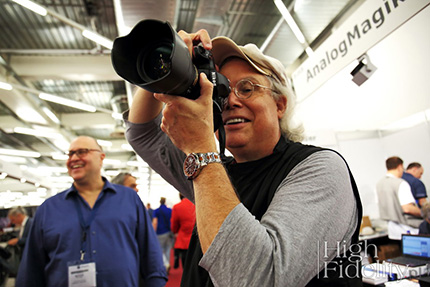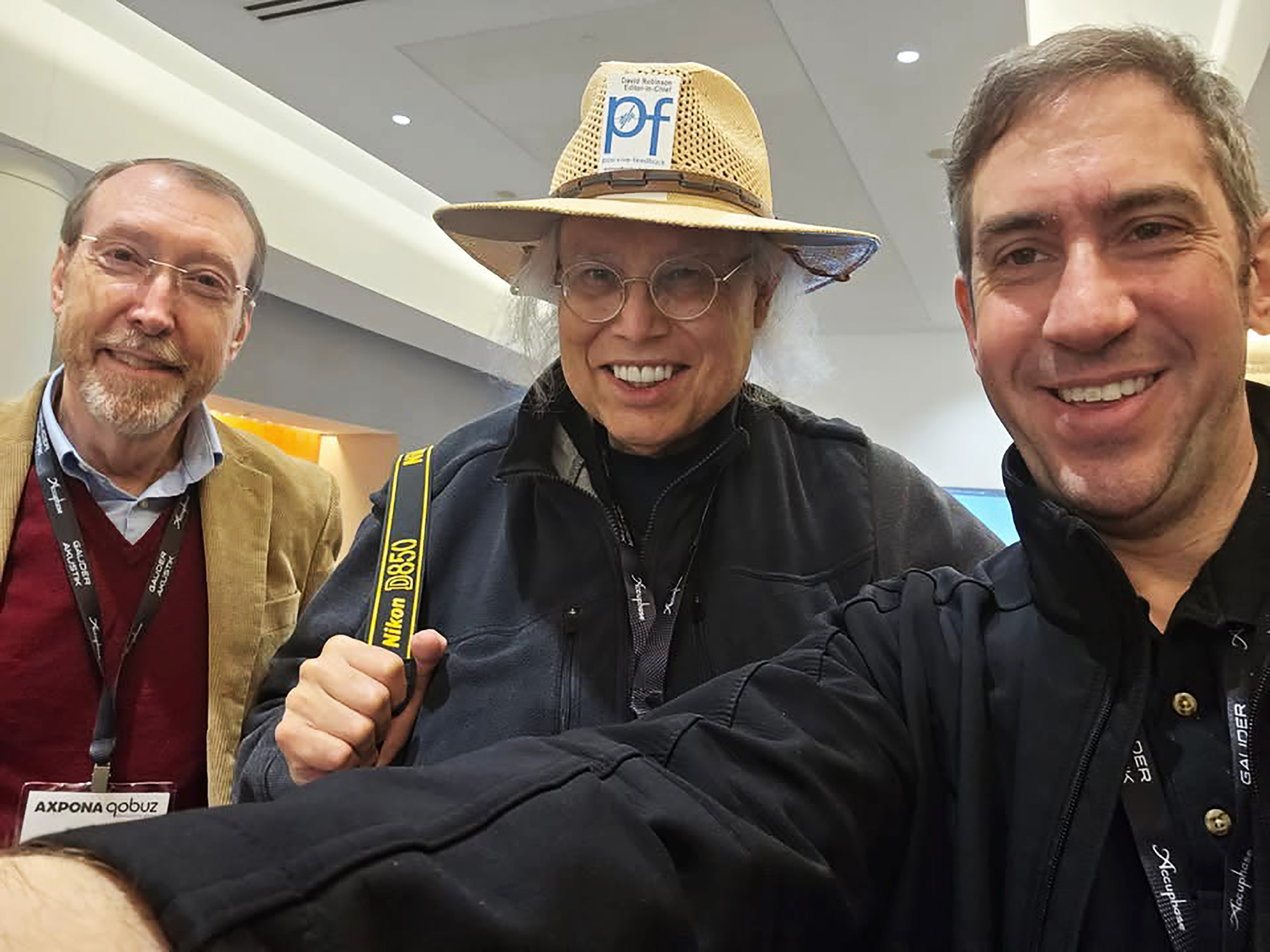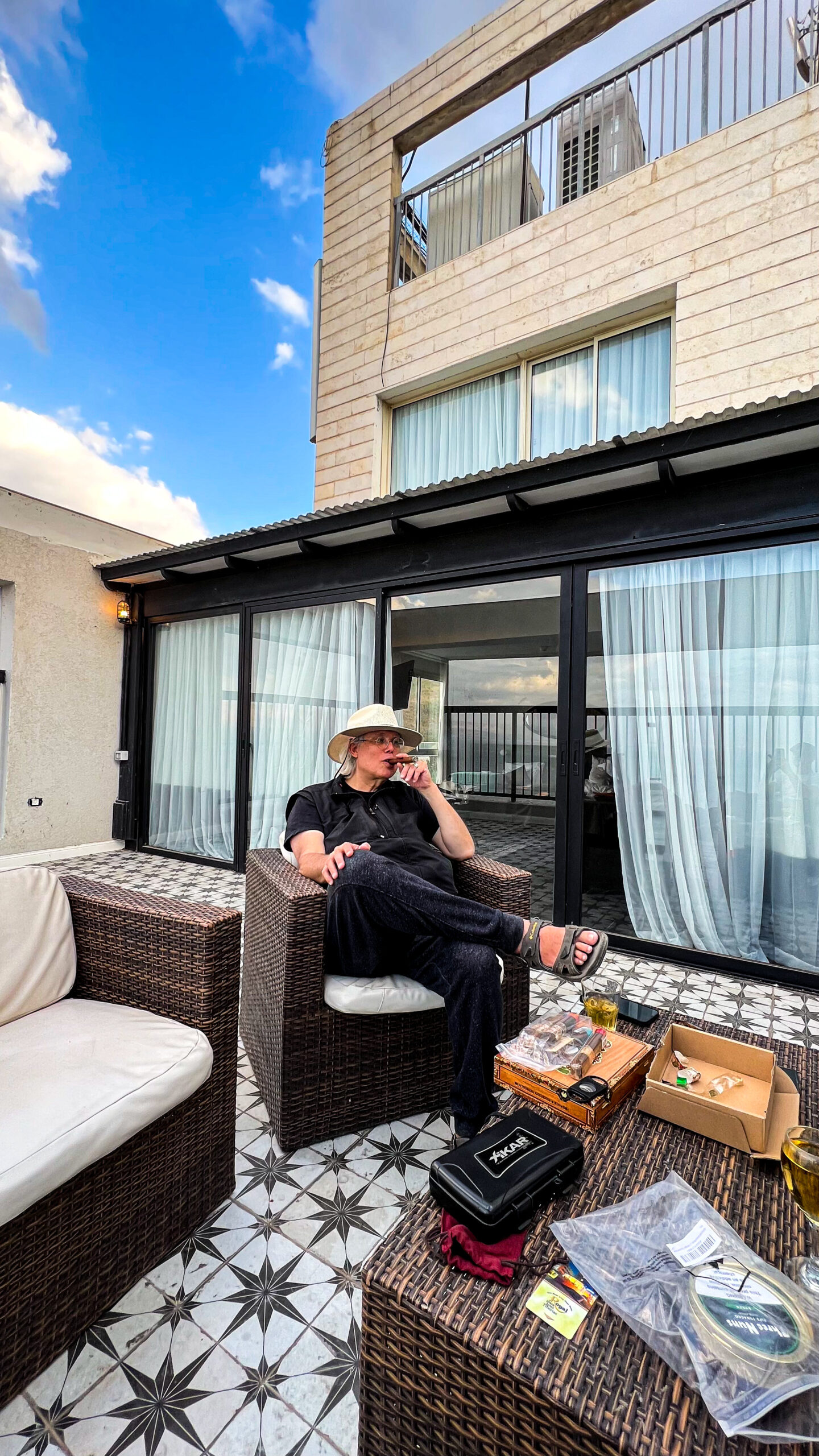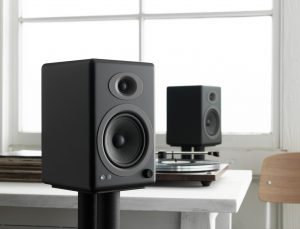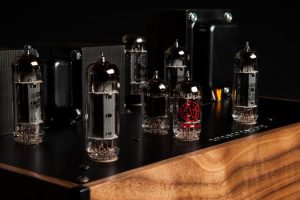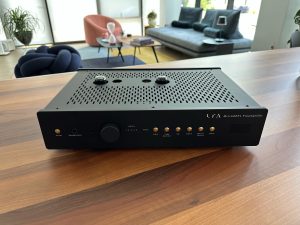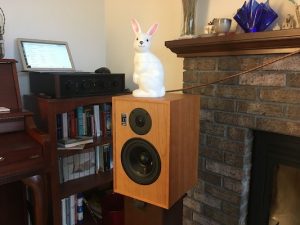Sometimes you write reviews.
Sometimes you write raves.
And sometimes you write love songs…
Introduction
"Sherman, set the Way-Back Machine to THE Show Newport Beach Michael Vamos. I met him a few years ago at a THE Show at Newport Beach. He had just started his high-end audio distribution biz, Audio Skies (http://www.audioskies.com), at around that time, and we talked a bit about his line card, how to grow in the industry, and what the future might look like. I've had many such conversations over the years; sometimes a new company takes off, but much of the time they seem to crash and burn within a few years. Fine audio can be a tough world to break into, and learning the right moves can be even tougher without friendly advice. Many of the people that I've talked to across nearly three decades of publishing PF are in the category of "Where are they now?" Too many, really.
Michael Vamos: a portrait. Happy Valley, OR, 2016.
As the next couple of years went by, Michael stayed in touch, however. From time to time I'd get a phone call or an email, and we'd chat about distribution, product lines, and marketing. Over time it was obvious to me that he was very intelligent, serious, committed, and passionate in his love for music. That's key: without passion, you simply won't have the heart energy to take the pounding that fine audio can inflict upon those who operate businesses in that world. I was impressed by his willingness to work at Audio Skies, year in and year out, to make it a success.
With lines like Larsen Loudspeakers (reviewed by PF's Larry Cox in Issue 69 back in Sep/Oct of 2013, HERE), Michael started his march into high-end audio. He has carefully built up his line card since then, making good progress.
When I really sat up and took notice, however, was when he added GamuT to this lineup. I visited his rooms at THE Show a couple of years ago, and was attracted by the really fine sound he was getting from this new line. In fact, I gave one of my Audio Oasis! Awards to Michael's room (see Issue 80, Jul/Aug 2015, HERE). I wasn't familiar with GamuT, and it was obvious to me that I needed to know a lot more about it. There was a deep musicality here that deserved exploration, and if it turned out to be as good in my listening room as was hinted to me in visiting the Audio Skies/GamuT show rooms, I was in for a treat. And certainly our readers here needed to be aware of such a potential garden of delight!
Michael was interested in doing this, and we agreed to setup a reference-level review project in later 2016. Only their best!
Into the book with it.
Logistics and setup
As is usual, the logistics of arranging something as complicated as a full-system review is no laughing matter. In fact, normally I do no more than one of these per year. In 2016, however, I went a little crazy, shame on me: I brought in two reference-grade complete systems. Early in the year I did the fantastic TIDAL Audio reference electronics with the beautiful Agoria loudspeakers (see my review in Issue 88, Nov/Dec 2016, HERE).
In the summer of that same year, after THE Show, Michael Vamos and Benno Baun Meldgaard, CEO of GamuT, sent in their top-of-the-line reference system for a trip around the block. This was an imposing set of gear:
- 1 GamuT D3i Dual Mono Preamp
- 1 pair GamuT M250i Mono Amps
- 1 pair GamuT Zodiac Reference Loudspeakers
- 1 set GamuT Reference Loudspeaker Cables with quad-terminated banana plugs
Pear Audio Blue Kid Thomas turntable (photograph courtesy of Audio Skies)
Additionally, Michael also sent a turntable system for trial with the GamuT system. It would be the Pear Audio Blue Kid Thomas TT with its special dedicated power supply and phono amp, Cornet 2 tonearm, and Ortofon Cadenza Black MC cartridge. I have to admit that I wasn't entirely enthusiastic about doing another turntable system at that moment, since we already had no less than three reference-grade turntables in the listening room here (Walker Audio's Proscenium Black Diamond Level V; Wave Kinetics NVS; and the KRONOS Pro LE, Standard Power Supply edition), and was finishing up reviews of both the NVS (see Issue 87) and the KRONOS Pro LE Standard edition (see elsewhere in Issue 90). Not that I wasn't interested…but space is space, time is time, and my four-dimensional grid was maxxing out.
I had to look at our Stillpoints ESS Racks carefully, and make some rearrangements, before I decided that we could (just) squeeze everything in. Michael had been so pleasantly insistent that I try the Pear Audio Blue kit that I decided to give it a go. As it turned out, I'm glad that I did so. I'll have some observations about the Kid Thomas set in our next issue.
Turntable cast:
- Pear Audio Blue - Kid Thomas turntable with Cornet 2 tonearm
- Pear Audio Blue - external power supply
- Pear Audio Blue - Reference phono stage
- Ortofon Cadenza Black MC cartridge
Michael arrived a couple of days after THE Show Newport Beach 2016. The GamuT gear had arrived just before him, in a rather imposing pile of crates and boxes. The professional rolling crates for the Zodiac loudspeakers were particularly daunting.
The mighty Zodiac reference loudspeaker, in all 450 pounds of its glory! It is shown here being unloaded in one of our garage stalls; its rolling packing case can be seen in the background.
Given the size and heft of some of the components that I review here, and the fact that our reference stereo listening room is upstairs, Positive Feedback uses experienced professional movers to handle unpacking/packing, handling, and placement of the big guns. That's almost always loudspeakers, although we do also see some very heavy amplifiers, as well. In this case, we had a bit of a SNAFU. The first crew sent by the moving company was inexperienced, and only had three young men on the team. The Zodiacs uncrated weigh 450 pounds each, with a beautiful natural finish, and they simply didn't have the chops to get the job done.
Rear view of the Zodiac, showing its double metal ports, quad connection posts, and its integrated isolation platform and feet.
A second team was sent out the next day to complete the task of getting the Zodiacs upstairs without damage. Being a group of older, experienced hands, all was done quickly. Our regular references, the Evolution Acoustics MM2's, were moved into our equipment storage room, and the Zodiacs were placed in their approximate positions for fine-tuning.
A closer view of the rear quad connection terminals and the two-layer isolation stand with feet: very careful design and heavy-duty construction.
We had lost a day, but all was now ready to go.
Michael set out at once to unpack the rest of the GamuT system. The D3i Dual Mono preamp and M250i monoblocks were hefty but nicely trim; he and I could handle them without a problem. The D3i was placed on a set of Stillpoints Ultra V Isolation Feet on the ESS Rack. The M250i's were placed on Stillpoints Ultra V's on the carpet between the Zodiacs. We used GamuT speaker cables from the M250i's to the Zodiacs; elsewhere in the system, Kubala-Sosna Elation! cables were the order of the day.
Michael Vamos with the GamuT D3i Dual Mono preamp on Stillpoints Ultra V Isolation Feet on our ESS Rack #2.
The D3i preamp fit very nicely on our Stillpoints ESS Rack. For such a flexible design, with many input and output options, the D3i didn't take up much space or generate much heat. In our listening room, these are major virtues.
The M250i monoblocks in place in front of the Walker Audio Proscenium Black Diamond Level V turntable system.
The M250i's actually surprised me by their reasonable heft and dimensions. For such powerful performers (see specs below), they didn't require a fork lift to get them into place. And unless you have a handful of folks to help you hoist, you'll appreciate this. (And the older you get, the more you'll come to appreciate it.)
Michael Vamos in the midst of setting up the Pear Audio Blue Kid Thomas turntable
Note that the M250i's are quite different from most solid-state amps. Instead of sporting a half-acre of carefully matched bipolars, Benno and Michael made a big point about their radically different approach. As Benno states on their Website:
"While most amps rely on a combination of multiple output transistors to achieve their amplification 'oomph', we use one single output transistor per phase, hence two per channel. That's it. No rows of multiple bipolar transistors. Stunningly minimal and an absolute winner performance-wise.
Of course we're not just talking about any transistor. These guys are massive—imposingly robust and immensely powerful (they can handle a peak current demand of 300 A and 100 A continuously). What's more, the particular models we use are rare in hi-fi—you won't find them in too many amps. The thing is, they're an investment. But it's an investment worth making and here's why."
I was startled when I was told of the enormous amperage ratings of their output transistors; I had not heard another monoblock using such massive components. Michael said, "Well, that's why they sound so good!" Michael has a good sense of humor, you see.
"The more common approach of combining multiple output transistors (sometimes as many as 48 per channel) comes with some major sonic and technical compromises. Compromises that we simply aren't willing to make. Think of it like multiple voices in a choir. No matter how talented or well-rehearsed the singers, the pitch and speed of each voice will vary fractionally, affecting the overall timing, clarity and dynamics of the sound. Similarly, no two transistors are exactly alike and so combinations of multiples will require all kinds of technical workarounds to combat 'sonic smearing'. But the trouble with technical workarounds is that they tend to introduce yet more potential for sonic smearing. So a powerful amplifier built with 48 transistors is more likely to sound like a choir than one clear and consistent voice.
Gamut amplifiers use just one Herculean transistor per phase. What's more, rather than using one NPN (negative-positive-negative) and one PNP (positive-negative-positive) transistor for each of the two channels, we stick with closely matched NPNs all-round. All of which enables our amps to meet our famously exacting standards for uber-precise timing, stunning clarity and vivid dynamics. In other words, to deliver that signature Gamut sound."
You'll see my appraisal of whether or not they fulfilled this claim later in this review.
The massive and beautiful Zodiac Reference Loudspeaker in place on the left channel, next to one of our racks of SACDs: Impressive! The swept-back nature of the Zodiac is clearly seen here. The result in the listening position is an exceptionally true alignment of frequency ranges at your ears.
The Zodiacs: about 450 pounds of gut-busting wonderfulness! To their credit, once they were actually in the room, they weren't too hard to work with and fine tune. In fact, Michael (and later, Benno) were greatly encouraged by how great the sound was in our listening room, which is not enormous, nor God's half-acre, as some are. It was not too much for the room, although our room is designed and executed to the highest standard possible for the space.
For those unfamiliar with our listening room here, I'll quote from my system description page (to be found by clicking on my name in the byline space at the top of any of my reviews/articles; the same is true of any of our editors or reviewers):
"My listening room is of irregular shape, being 12.5' wide x 13.5' long in the right section, and 18' long in the left (equipment) section, with a ceiling height of 8'. It is cambered left and right, with no perpendicular edge on the sidewalls to ceiling transition. Construction was done with 2" x 6" studs, wall-within-a-wall on the left and right sides (media storage in a room to the left, equipment storage in a room to the right). The room is on the second floor, directly over the garage—no competing sounds. The neighborhood is quiet, being located on top of a hill some 500 feet above the valley below, the listening room faces south, away from the main access road.
Power to components in the listening room is fully dedicated. 10 gauge Romex was pulled directly from the panel, all from the same pole to avoid ground loops. Four 20 amplifier runs were done, and Tesla Flex and JENA Labs cryo-treated AC receptacles were installed. All lights and peripheral components are on separate circuits. Circuits have been tested for proper ground and polarity."
That's the setting.
Terminus ad quem, primus: Michael's final placement of the Zodiacs and the M250i monoblocks. Yes, imposing is the word…
Specifications
The specs on the GamuT products that we reviewed are quite something. GamuT lists them as follows:
D3i PREAMPLIFIER
INPUTS
- 1 x XLR balanced input
- 4 x RCA unbalanced inputs
- Home theatre input option for use with surround sound
- All input connections gold-plated
OUTPUTS
- 2 x XLR balanced outputs
- 1 x RCA unbalanced output
- 1 x RCA tape output
- All output connections gold-plated
INPUT & OUTPUT IMPEDANCES
- Input impedances: 20 kΩ unbalanced / 40 kΩ balanced
- Output impedances: 75 Ω unbalanced / 150 Ω balanced
FREQUENCY RESPONSE
- 5 – 100 kHz +/- 0.1 dB
TOTAL HARMONIC DISTORTION
- <0.0008% (2 Vrms)
SIGNAL TO NOISE RATIO
- 100 dB 'A weighted'
POWER CONSUMPTION
- 20 W idle (min. consumption in 'on' mode)
IN-BUILT PERFORMANCE MONITORING
- Every Gamut amplifier has an error-checking start-up sequence that goes through several condition checks, lasting a few seconds, before allowing full operation.
- A complex protection circuitry can detect DC errors, high-level subsonic signals, long-term ultrasonic signals, high temperatures and low impedance loads.
MADE IN DENMARK
- 100% designed and built in Denmark
SIZE & WEIGHT
- Dimensions (mm): 112 (height) / 430 (width) / 440 (depth)
- Dimensions (inches): 4.41 (height) / 16.93 (width) / 17.32 (depth)
- Product weight: 11 kg
- Shipping weight: 16 kg
WARRANTY
- 5 years
M250i MONOBLOCK AMPLIFIER
POWER OUTPUT
- 250 W into 8 Ω
- 500 W into 4 Ω
- 900 W into 2 Ω
INPUTS
- 1 x XLR balanced input
- 1 x RCA unbalanced input
- All input connections gold-plated
OUTPUTS
- 2 x speaker outputs
- All output connections gold-plated
INPUT IMPEDANCES
- 20 kΩ unbalanced
- 40 kΩ balanced
INPUT SENSITIVITY/GAIN
- Adjustable: 0 dB / -6 dB / -12 dB / -14 dB
FREQUENCY RESPONSE
- 5 – 100 kHz +/- 0.1 dB
TOTAL HARMONIC DISTORTION
- @1 kHz <0.05%
SIGNAL TO NOISE RATIO
- > 100 dB 'A weighted'
POWER CONSUMPTION
- 50 W idle (min. consumption in 'on' mode)
IN-BUILT PERFORMANCE MONITORING
- Every Gamut amplifier has an error-checking start-up sequence that goes through several condition checks, lasting a few seconds, before allowing full operation.
- A complex protection circuitry can detect DC errors, high-level subsonic signals, long-term ultrasonic signals, high temperatures and low impedance loads.
MADE IN DENMARK
- 100% designed and built in Denmark
SIZE & WEIGHT
- Dimensions (mm): 158 (height) / 430 (width) / 420 (depth)
- Dimensions (inches): 6.22 (height) / 16.93 (width) / 16.54 (depth)
- Product weight: 35 kg
- Shipping weight: 40 kg
WARRANTY
- 5 years
ZODIAC REFERENCE LOUDSPEAKERS
DESIGN PRINCIPLE
- 3-way impulse optimised bass reflex floorstanding loudspeaker
DRIVERS & CROSSOVER
- Brand new custom-built drivers, created in collaboration with world-leading driver experts to deliver phenomenal dynamic response
- 1 x 1.5" tweeter: ring radiator, silk cone, neodymium magnet
- 1 x 7" mid-range: sliced paper cone, impregnated with a bespoke blend of natural oils
- 3 x 10" woofer: paper cone, with Gamut solid wood dust cap for superior pistonic performance
- Drive units meticulously phase-aligned for pin-sharp soundstaging and flawless timing
- 3-way phase and impulse linear crossover design with DC coupled mid-range
- Crossover points 350Hz & 2,250Hz
- Crossover features superlative quality copper and silver capacitors from Danish experts Jantzen Audio
BODY
- Highly complex body showcases a new system of internal spacing, in which the mid-range and woofer chambers are semi-separated by bespoke acoustic filters, thus maximising the openness and dynamic response of the mid-range
- 21-28 layers (varies by section) of sustainably-sourced hand-selected real wood veneers, form-pressed into solid wood panels
- Curved shape and rear tilt designed for superior sonic performance
- Complex internal bracing strategically positioned to enable dynamic musicality
- Minimal but optimum internal damping
- 2 x 5mm brass and stainless steel rear-mounted ports precisely tuned for optimum impulse response
- Custom-designed front-face protects drivers while ensuring no acoustic obstruction
BASE
- Massive plate-and-spike base system, constructed in a five-layer sandwich of anti-resonance coated metal and a composite damping material, provides incredible stability and decouples speakers from floor
- Removable stainless steel 'coasters' to protect hard floors and damp resonance
- Finely-threaded adjusters enable effortless refining of vertical and horizontal tilt of loudspeakers to optimize the speakers' sonic performance in your room
WIRING & CONNECTIONS
- Gamut Reference cabling internally throughout
- 4 input terminals to enable bi-wiring and bi-amping
- Gold-plated OFC copper input terminals with stainless steel 'nuts', compatible with stripped wire, 4mm banana plugs or custom 20mm spades
MADE IN DENMARK
- 100% designed and built in Denmark
SIZE & WEIGHT
- Dimensions (mm): 1,650 (height) / 310 (width) / 680 (depth)
- Dimensions (inches): 64.96 (height) / 12.20 (width) / 26.77 (depth)
- Weight 196 kg
KEY PERFORMANCE INDICATORS
- Frequency response 16Hz to 40 kHz
- Nominal impedance 4 Ω
- Minimum impedance 2.9 Ω @ 180 Hz
- Sensitivity 90 dB / 2.83 V
WARRANTY
- 5 years
During the setup, I was particularly struck by the swept-back stance of the Zodiacs, which was curved and very precisely tuned by Michael (and later fine-tuned by Benno) to provide the best possible integration of the driver array as it arrived at the listener's ear. Also catching my ear were the pair of ports on each side, which were a striking combination of brass within aluminum…no plastic at all, these.
The double brass-inside-aluminum ports of the Zodiac are clearly seen here, in this photograph taken before they were taken upstairs for placement in our listening room. You can also see the four binding posts, which were connected by GamuT reference cables.
The solidly-crafted speaker cable connectors drew my gaze; no simple generic solution, these. Note the four-way GamuT Reference Speaker Cables.
Overall, these specifications make for a system that ought to be exceptional. I had heard earlier GamuT setups at shows, where they had won some of my Audio Oasis! Award attention, but none featured their top-of-the-line elements. Having these here would finally give me an opportunity to see what GamuT's notion of "reference level" would sound like.
The Sound
Michael completed the initial setup, and we sat down to do initial listening.
Michael Vamos: a portrait. Happy Valley, OR, 2016.
Right from the get-go, I was captivated by the character of the musical presentation that I was hearing. It was quite a bit different from most all of what I've had in my listening room over a number of years now. In fact, I've been more than a bit bemused to try to describe it, the effect was so potent.
Michael Vamos becoming now and Zen…
First of all, the GamuT System had an effect that I can only call "organic." There was an absolutely integrated sense of all frequency ranges linking up in a way that was very much like a living creature. The emotional connection was immediate, enveloping, and completely relaxing. One's body first responded to the music viscerally, spiritually; only afterwards might one begin to notice the usual sort of audiophile elements. Analysis might come later, but it did not do so right up front, a refreshing change.
Over time, it became clear that not only were the drivers well-meshed from top to bottom, but the sound seemed to go beyond merely "seamless": The drivers seemed to breathe and flex as if they were of one accord. A symbiosis of sound; a richness that was terribly seductive.
Some of this I would attribute to the design and execution of the custom Scanspeak speakers, done to Benno Baun Meldgaard's highly demanding specifications. After listening to so many world-class loudspeakers with ceramic, diamond, or aluminum drivers, a return to paper cones was a serious change of pace. GamuT describes the special process used to finish the paper material in its drivers in this way:
"Our state-of-the-art loudspeaker drivers are designed by Gamut, for Gamut. Unique elements include the distinctive natural oils used to impregnate our mid-range driver cones to eliminate the possibility of colouration from the cones' fibres, and the woofers' solid wood dust caps hand-selected according to weight and density to stiffen the cones and ensure perfect performance across the whole frequency range.
In each loudspeaker the drive units are painstakingly aligned both physically and electronically to achieve a phenomenal phase response. This is essential to impeccable timing and is what gives your music not just fidelity but also real depth, presence and soundstage."
I suspect that the reason that these drivers sounded different from Scanspeak-based loudspeakers that I've had in the past must have much to do with the use of the oils on the cones, plus the uniquely distinctive wooden dust caps used on the drivers. Other Scanspeaker drivers that I've heard were always musical, but without anything like the amazing focus and cohesiveness that I'm hearing with the Zodiacs.
Of course, some of this result must be attributed also to the crossover design and execution. Michael and Benno were at pains to make sure that I understood that the GamuT crossover, located in the base of the Zodiacs, was wired point-to-point, and constructed impeccably. Later, when Benno visited our listening room, he shared with me some photos of the superb Zodiac crossover. (Sorry, I don't have those photographs.) I was really impressed with the quality of the work, which epitomized real craftsmanship and elegance of design.
Whatever is happening in the Zodiac's crossover, it's hitting symbiosis with the D3i preamp, the M250i monoblocks, the drivers, the cabinet, the stands, the cabling, and the ports: All's one, connecting with your heart via your ears.
The frequency range was superb. GamuT says that the low end of the Zodiac is 16Hz, while the north end of the mule gets up just over 40kHz. The GamuT electronics are such that the Zodiacs never poop out. Given what I'm hearing, I can say that I have no doubt of these numbers at all. The electronics never pooped out on even the most extreme sources that I tossed at them: SACDs like Spitball's unobtainium recording Pop Condition, or DSD recordings like the soundtrack to Blade Runner, or the Wave Kinetics Records' Quad DSD of Ilya Itin doing Debussy Preludes, Books 1 & 2.
Top to bottom, the high frequencies were clear and extended, thanks to the unique tweeter that GamuT employs; the midrange was superb, being rich but uncolored, and the bass just went on and on. And all acted as one; I was enthralled, frankly.
As you might guess, the dynamics of the GamuT reference system were stellar. In fact, GamuT gear is quite capable of incredible slam. It handled the most demanding dynamics without breaking a sweat. Cootie Williams on Quad DSD; the great Jimi Hendrix's new(er) SACD, People, Hell and Angels; the 200 gram LPs of the RCA Living Stereo masterpieces, Respighi: The Pines of Rome/The Fountains of Rome and Scheherazade; or the Holst's The Planets…all were presented effortlessly by the GamuT reference system, with no problem. Indeed, almost casually.
All I can say is that Benno's choice to go with just a single solid-state pair of devices with enormous amperage ratings is paying off, in spades. Coherence, clarity…and enormous dynamics, all at once.
Given the sheer seductive musicality of the GamuT reference system, it would be fair to wonder if there might be a loss in the realm of transparency, an audio virtue that I consider to be the king of them all. In this case, I admit that I was surprised. It turned out that there was no necessary tradeoff of clarity for musicality with GamuT. The system seemed to just melt away, with a crystalline feel that never left the flesh and blood of the music behind. Splendid, lovely, amazing!
Detail was likewise unimpeded; the glorious tweeter that GamuT put into the Zodiac, driven by its electronics, put the texture and musical elements in place with authority with recordings like the immortal Stokowski Rhapsodies SACD reissued by Analogue Productions. In fact, detail emerged with ease, without in any way destroying the organic wholeness and soul of GamuT. This is a really rare accomplishment; these two are often found in opposition to one another, rather than being coordinate virtues.
Second Round: The arrival of Balanced Audio Technologies electronics and GamuT's Benno Baun Meldgaard
Michael had set up the GamuT Reference System, which happened immediately after T.H.E. Show Newport Beach, in June of 2016. This was an event that Benno Baun Meldgaard had been unable to attend, at that time, unfortunately. I listened for a while to the all-GamuT array. Unfortunately, business being business, by late September GamuT needed the D3i preamp and the M250i monoblocks back for demonstration purposes down in California, which would mean that Benno wouldn't be able to hear the all-GamuT system before the electronics departed. He intended to be here, but the scheduling simply didn't work out.
Ah well. Life can be like that.
So Michael returned, packed up the D3i and the M250i monos.
Damn!
But that wasn't an unmitigated disaster. In their place, I put a set of very fine Balanced Audio Technology products: The VK-53 SE reference preamp; the VK-255 stereo amplifier; and the VK-P12 SE phono amp with SuperPak. It would be extremely interesting to hear how the Zodiacs would handle the switch from GamuT reference upstream to the hybrid BAT gear.
I'm well familiar with BAT, having had them here in my listening room years ago. They have traditionally had an audio flavor with just a kiss of warmth in it, a truly beautiful blend. Dr. Sardonicus and I both favored it strongly years ago, with both of us giving BAT a big thumbs up in separate evaluations (for examples from Dr. S., see HERE and HERE). I thought that a revisit with the latest generation of BAT gear would be a walk through memory lane, an opportunity to review the some of the newest BAT designs (my evaluation will appear later in the year), and, serendipitously, a chance to match them up with the Zodiac.
How could it miss?
Benno Baun Meldgaard of GamuT: a portrait, Happy Valley, OR, 2016
Benno arrived shortly after the GamuT electronics had departed, very early in October. It was great to have him here, so that he could evaluate the Zodiacs in our listening room, and also hear them with the BAT kit.
Talking with Benno Baun Meldgaard: Happy Valley, OR, October of 2016.
We spent quite a while that day talking about fine audio. He told me his own story of his love for audio, and how he became involved in GamuT. Eventually, he became the new CEO and lead designer, taking GamuT into a new direction for design and execution of production. It was a long story, quite as fascinating to me as I'm sure it would be to you.
Benno Baun Meldgaard, getting into the groove!
Then we moved upstairs. Benno adjusted the speakers slightly from Michael's placement, tweaking their position and tilt just a bit. Back and forth he went, until he was satisfied with the results. And I'll admit, the sound of the Zodiacs was even better than before. In fact, my evaluative comments above are based upon this final placement that Benno accomplished that day.
Benno with his beloved Zodiac, getting it just right.
In which Benno is into his air guitar!
The combination of the BAT electronics and the Zodiac was clearly very fine, judging by Benno's reaction to the music. When you drift from listening critically to make sure that the speakers are properly placed, to whaling and rockin' out with the recordings, then you know that all is well.
Benno and Elvis: A great combination in any listening room!
The VK-53 SE is an excellent preamp at its price point ($14,995 last time I checked), providing oodles of detail with that aforementioned kiss of warmth that fit the rich, organic coolosity of the Zodiac to a T. The BAT VK-255 SE stereo amp has plenty of power (300 Watts per channel into 4 ohms), though not quite the enormous 500 WPC at 4 ohms found in the M250i monos. Regardless, the Zodiacs clearly connected with the Zodiacs, and the Zodiacs clearly connected with both Benno and myself.
Benno in bliss…
The Zodiacs really did work and play well with Balanced Audio Technology, and BAT received the Benno Baun Meldgaard "thumbs up!" as a result. And that, children, means something.
By the time that Benno departed, this iteration of our listening room system had really locked in. All music, regardless of type or format, sounded brilliant: highly seductive, always musical.
In fact, both the full GamuT system and the BAT-variant-with-Zodiac were potent reminders of why I had fallen so deeply in love with audio back in my teenage years: the emotional connection with the music was inescapable, giving more to be human (and humane) with.
And isn't that what we're all looking for? Not analytical dissection, but the living, breathing, body of the audio muse?
For me, yes.
For you, I hope….
Conclusion
Well, what can I say now? How to respond to the emotional resonance of the GamuT art?
Really, I consider my response to the GamuT reference system—all of the above—to be a love letter. I am a paramour of music, seduced by the rich, organic curves of music, presented most profoundly and harmoniously by the GamuT Reference System. The price means that it isn't going to be for everyone, although it's hardly anything like the most stratospherically-price high-end audio system, either. If you have a budget that can accommodate GamuT, then you may find that you've found the audio love of your life.
Scheherazade: The rich, the organic, the harmonious, the seductive!
(This image is in the public domain; HERE.)
Fair warning: In that case, hearing may well lead to purchasing! GamuT is that bloody good!
But the results are inarguable. I have found the GamuT reference system, and then the Zodiacs with the BAT electronics described above, to produce stellar music, transforming my listening room and my experience there quite wonderfully. No one who has visited it has come away unimpressed with the quality of the music, and the experience that I'm enjoying. With the GamuT Reference system, Benno Baun Meldgaard and company have firmly established themselves in the front-rank, top-level, of high-end audio designers and manufacturers in the world. Other great audio companies should take note: GamuT has joined you!
And audiophiles everywhere are much the richer for this fact.
In sum, the GamuT Reference System sets a new standard for the fusion of rich, organic musicality with transparency and dynamics. It therefore earns a "Ye Olde Editor's 'Very Highest Recommendation!' – and with real passion!
1 GamuT D3i Dual Mono Preamp
Retail: $8390 (optional Reel-2-Reel board or Phono MC/MM board +$2,000)
1 pair GamuT M250i Mono Amps
Reatil: $25,990
1 pair GamuT Zodiac Loudspeakers
Retail: $149,900
1 set Gamut Reference Bi-Wire speaker cables 3m
Retail: $6190
1 Set of GamuT RCA/XLR interconnect 1m
Retail: $2990
GamuT Reference power cables 2m
Retail: $4290
[Note that the following components will be summarized in a brief follow-up impressions article in the near future.]
Pear Audio Blue
Kid Thomas/Cornet 2 turntable/tonearm
Retail: $7995
Pear Audio Blue: external power supply (optional)
Retail: $1995
Pear Audio Blue: Reference phono stage
Retail: $4495
Ortofon Cadenza Black
Retail: $2719
Gamut A/S
Skolegade 9
DK-6818 Aarre
Denmark
US Distributor
Michael Vamos, GamuT USA/Audio Skies
310.975.7099
Los Angeles, CA
All photographs and image processing by David W. Robinson; cartoons by Dan Zimmerman; album covers courtesy of Analogue Productions/Acoustic Sounds; public domain image of Scheherazade is attributed.




